Overview of Russian cruisers development
 Russian Empire (1875-1919) – About 50 ships
Russian Empire (1875-1919) – About 50 ships
Like for other nations, Cruisers were an evolution of 1850s steam frigates. However the first three “Kreisers” (Cruiser) were called so in the early 1880s when the three Variag class wooden screw corvettes were rearmed so. Laid down in 1861, the Askold, Variag and Vitiaz were ordered and designed before the American secession war, and therefore the age of ironclads. No further ship was therefore built of this class.
Poor sailboats, their single shaft and unique rectangular boiler, procured them an average speed of 10 knots. Alongside these, the Russian Navy purchased three foreign civilian merchant ships, iron-hulled in the USA by 1874-78. Their machinery was above the waterline, exposed and therefore their military value was poor. They were named Azia, Afrika (2500-2590 tonnes) and Europa (3160 tonnes). In 1884 the Variag class ships (see below) original 17 smoothbore, mouth loading guns were replaced by either a single 6-in/23 and ten 4.2 in/20, eight 6-in and four 4.2 in or one 3.4 in and a spar torpedo.
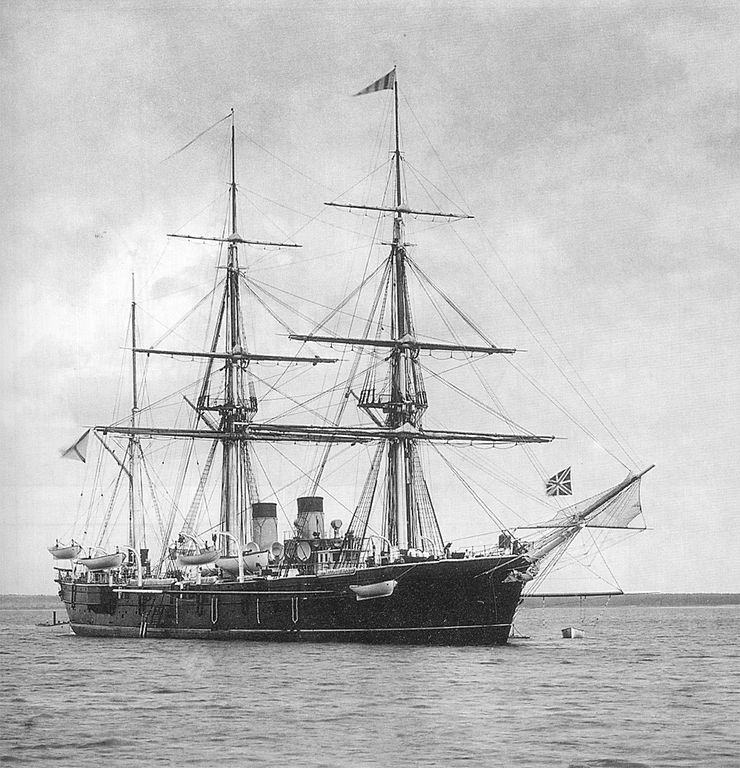
The Rynda, as built.
In 1965, the Russian Navy was actually smaller on paper than the Turkish Navy, counting three brand new (launched 1860) screw three-deckers, including the 135-guns admiral ships Tsessarevitch from Baltic works at Nikolaiev. Alongside these, discarded in 1862 were nine traditional sailing three-deckers of the line. In addition were six converted screw two-deckers of 74-84 guns, nine screw frigates of 1858-61, 40-68 guns, eighteen screw corvettes and eight screw sloops. Also discarded in 1862 were four frigates and four corvettes.
In 1862 were launched the first Russian broadside ironclads, screw frigates converted on the stocks called Sevastopol and Petropavlovsk. They were followed by the Pervenetz class (1863), the Kniaz Pojarski (1867) and the Minin. Launched at Baltic Works in 1869 she was a turret ship at first, later converted and rebuilt, then classed as an ‘armoured cruiser’ in 1878, quite a long process of nearly ten years. The spur for such endeavour was the original design, copied from the British Captain. The model capsized and this created such a scandal that the formula of rigged turret ships in this fashion was soon abandoned.
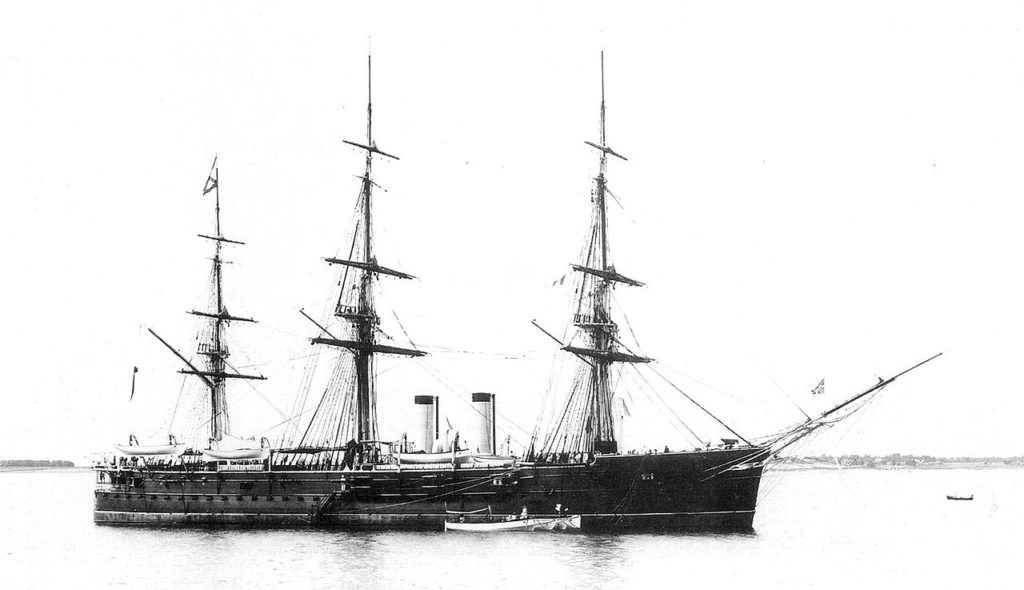
General Admiral as built. She was arguably the world’s first armoured cruiser.
Contemporaries of this reconstructed vessels was the first purpose-built Russian armoured cruiser, the General Admiral class. She was also the world’s first of the type, arguably. Fully rigged and without ram, she had a central battery with 8-in guns and and a 5-6 in wrought iron armour, lighter than the Minin’s 7-in plates. Both cruisers were locally built, at Nevski and Baltic works. The Vladimir Monomakh, another masted armored cruiser followed nearly ten years later in 1882, and Dmitri Donskoi in 1883, Admiral Nakhimov in 1885 and Pamiat Azova in 1888. The Nakhimov was looking towards UK and the HMS Warspite, inaugurating four twin-turrets with eight 8-in guns, whereas Pamiat Azova seemed to look more for French designs, the two most prestigious references at the time (and best navies).
Growing rivalry with UK especially in Asia trigerred the construction of an even larger cruiser, the 11,700 tons Rurik. nearly twice the tonnage of the previous Azova, the Rurik created quite a stir in the west. This was one of the largest armoured cruisers of the time of her launch in 1892. The French Dupuy de Lome indeed displaced 6,600 tonnes, and the British Edgar class displaced 7,700 tons. So the Rurik outclassed them with quite a margin. Instead of turrets she had only four sponsons-masked singe 8-in guns, completed by sixteen 6-in guns, lighter guns and torpedoes. Her rigging was traditional, barque style. The admiralty reacted by ordering the Powerful class, to which the Russians replicated with the Rossia, even larger than the Rurik at 13,670 tonnes, and the near-sister Gromoboi. Both had the same four-funneled silhouettes and very smlar features. All three ships were armed the same and posed quite a threat to any Navy at the time.
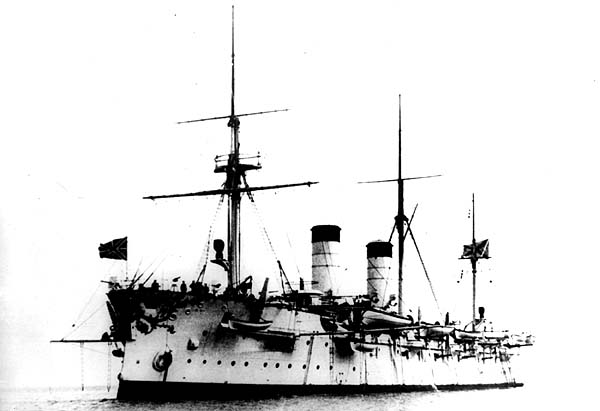
The Rurik, first of the name. At that time, the world’s largest cruiser. She was scuttled in Port Arthur by 14 August 1904 to avoid capture.
However this trend was soon to end. In 1899, when the Gromoboi was launched at Baltic works, the Russian admiralty looked to the West again, this time for a more reasonable, medium-size and cheaper design. The Bayan and Makarov were therefore ordered at La Seyne. Only Bayan was ready for the Russo-Japanese war, completed in 1903. The Makarov was launched six years after, and completed in 1908. The design was considered sound enough to undertake the construction of two more ships, the Bayan second of the name (as now the first was in Japanese hands, renamed Aso), and the Pallada. They had modern military masts, protection and two turrets for their main armament, the rest being placed in barbettes.
At the same time these latter cruisers were laid down at New Admiralty, the Russian staff returned to British influenced and looked for the latest Vickers Armstrong armoured cruisers. The last Russian armoured cruisers therefore became one of the very best in the world, almost a quasi-dreadnought. This was the Rurik, second of the name. This 15,200 tonnes ship actively participated in the first world war and her appearance changed over time.
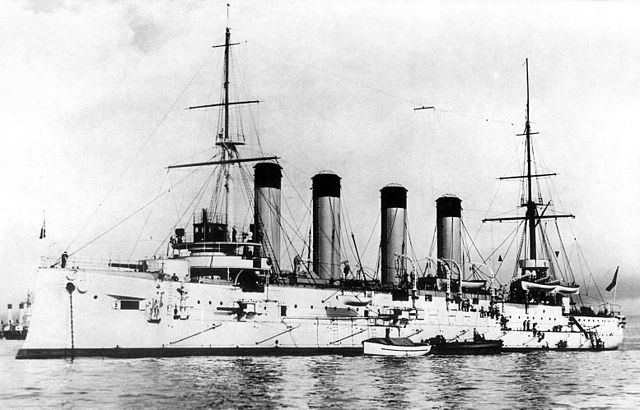
The Bayan in 1903 at Kronstadt
Meanwhile, the cruiser line evolved with the first proper “cruisers”, unprotected, the barque-rigged Pamiat Merkuria in 1879, followed by the Vitiaz class, first Russian protected cruisers in 1884. Vitiaz and Rybda were launched at Galernii Is yards and completed in 1886-87. Sheated and coppered, their protection was only partial. The first “true” protected cruiser, by a full steel protection, reduced military masts (schooner style) and pronounced ram bow was in fact a typical French “product”, built at St Nazaire. She was followed nearly ten years after by the Le havre built Svetlana. This gave Russian engineers clues about modern protection, trigerring the construction of three properly Russian cruisers of the Pallada class. Of these, the famous Aurora was instrumental in the Revolution and is therefore religiously preserved. Displacing 6,600 tonnes these 1899 cruisers were well armed, all with deck or sponsons masked 6-in guns.
Growing tensions in Asia conducted the admiralty to order ships from other yards to complete the fleets, such as the Variag at Cramp, USA, and the Aslkold in Germany at Krupp yards. They had similar specifications and therefore counted both twelve 6-in guns, twelve 11-pdr, eight 3-pdr, and two 2-pdr and torpedoes.
Renewing her confidence to German Yards, also due to the arrival of Nicholas II on the Throne and similar will to built a strong colonial empire based on a similarly strong navy, the Russian admiralty would order the Bogatyr (head of class, the other three were built in Russia) in Vulkan, Stettin (1901), the novik at Schichau (1900) and Boyarin at Burmeister & Wain (1901). The Novik later inspired Russian-built near-copies, the Izmurud class. Launched in 1903 they were the last Russian cruisers (with the Rurik) until WW1 broke out. Indeed, the next Murarev Amurski class ordered at Schichau in 1913, were launched in March and November 1914 in Germany, both requisitioned by the German Navy and only the first survived WW1. The Admiral Nevelskoi, renamed Pillau and used as a minelayer cruiser was completed in September 1915 and sunk in action in 1916.
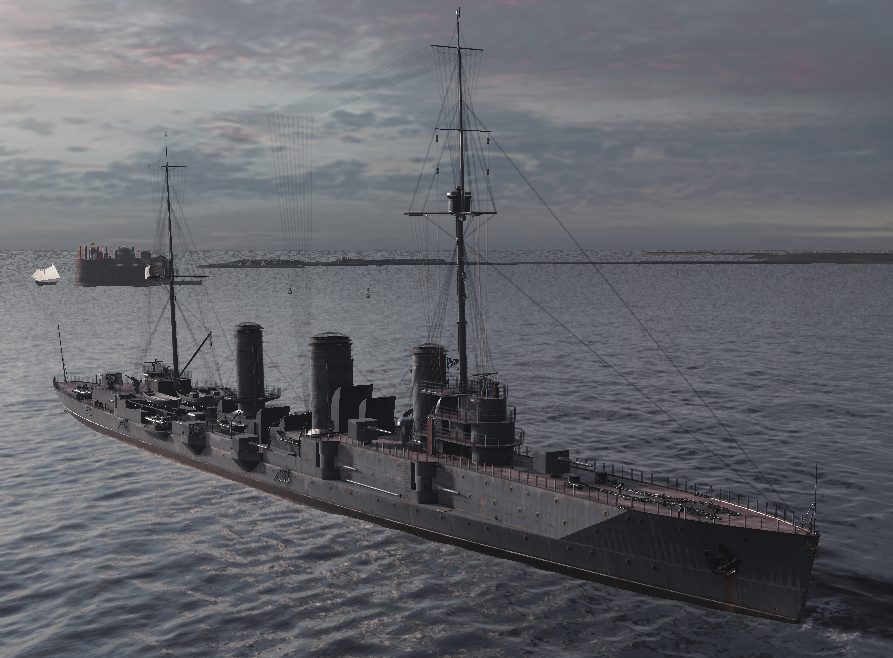
WoW’s rendition of the Svetlana class. None was completed before the revolution and civil war.
Elbing survived until WW2. But their design proved quite influencial for the ships of the 1912 programme. These were the Svetlana class cruisers, which were to be followed by the 1912 and 1914 program Admiral Nakhimov. All eight ships were relatively similar, with a 7600 tonnes displacement. The first pairs were ordered at Reval and Putilov yards, and the second at Russud and Nikolayev, for the four fleets. The first six were laid down in 1913 ad the last in 1914. Unsurprisingly construction was stopped by the war. Of the first Svetlana class only two were completed after the revolution, partially rebuilt (see the WW2 Profintern class) one incomplete, and two completed as the Chervonia Ukraina and the completely redesigned and rebuilt Krazny Kavkaz.
Going through all this only shows the influence of foreign designs pretty much until the war broke out, Britiah at first, then French when rivalry sprung, and lastly German, mostly for political reasons. Contrary to Western fleets which privileged uniform classes, the Russian cruisers ended as unique ships, causing some discrepancies in armament variety and management. Inferior numbers were compensated by individually superior vessels, such as the triplet Rurik-Rossia-Gromoboi in the 1890s or the impressive Rurik (ii), contemporary of the Dreadnought and very much influenced by the monocaliber and fast battleships concepts popularized at that time. Like France or the USA, the launch of HMS Dreadnought pretty much killed any cruiser project before 1912-13 and they were never realized. In fact only Great Britain and Germany did designed and produced modern light cruisers during the 1906-1914 decade. Budgets were reaffected entirely in the design of dreadnought type battleships, way more costly and complex.
Armament of Russian cruisers
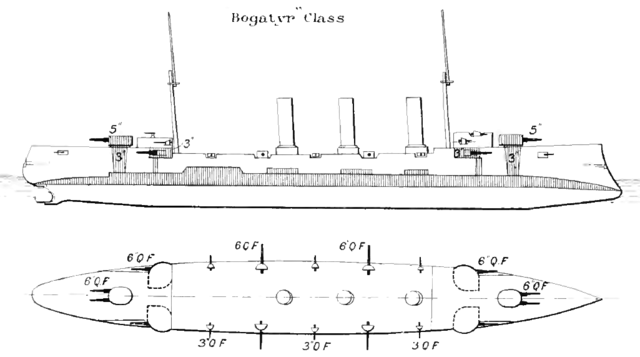
Armament scheme on the Bogatyr class (Brasseys)
-203 mm/35 (8″) Pattern 1885:
Among the oldest guns, designed by Brink, at the head of Russian artillery. They were used on early armored cruisers and gunboats. The serie started in in 1886 with 29 ordered. They were discarded in 1904-05 and ended in coastal defense guns, usrviving until WWI. They were composed of an inner tube followed by a barrel and three hoops rows, manual breech with pneumatic gear. They fired the HE & AP “Light” (176/198 lbs, 80/90 kg) and “Heavy” of 193 lbs (133 kg) rounds. Muzzle velocity ranged from 2175 fps (663 mps) for the ‘light’ to 1912 fps (583 mps) for the ‘heavy’ round.
-8″/45 (20.3 cm) Pattern 1892:
The guns were designed by the Obukhov factory by the late 1890s, for armored cruisers. Thirteen guns were made for 1901 more for the 1906-07 Bayan (II) class ships. During the war, more were made to rearm older cruisers and others went into coastal defense batteries, deactivated by 1941. The barrle was made with an inner tube and two connected cylinders. In addition, the were used by Rossia, Gromoboy, Bayan, and the gunboat Khrabry.
These 1892 model guns fired the HE “old model” (193.5 lbs/87.8 kg), and the AP “old model” (193.5 lbs/87.8 kg), and the semi-AP modified model 1907 fired a 235 lbs./106.9 kg shell. The 1907 HE model fired a 193.5 lbs./87.8 kg round and the
HE/Semi-AP model 1915 fired a 246.3 lbs/112.2 kg rounds, while the shrapnel shell weighted 257.5 lbs/116.8 kg.
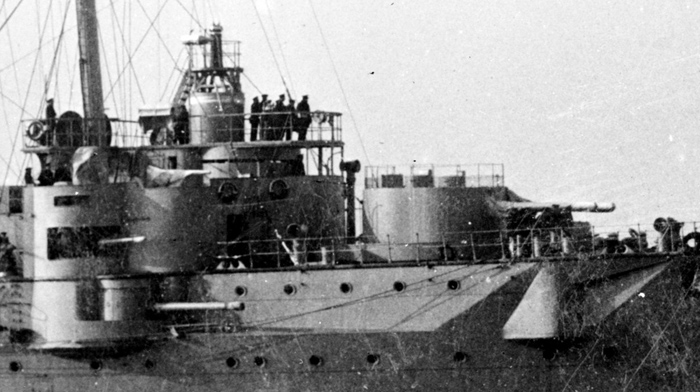
Closeup of the Oleg armament: 6-in guns in barbettes and turret.
-120 mm/45 (4.7″) Pattern 1892:
French Canet guns using fixed ammunitions for an exceptional rate of fire, derived from a pair of 15.2 cm/45 (6″) guns shown to the 1891 Russian delegation. The Russian derivatives were capable of 12 rpm, down to 10 rpm for the 15.2 cm/45 (6″) guns, licenced. In 1901 many were manufactured by OSZ. During the Russo-Japanese wars, some bursted open and the barrels were reinforced afterwards. In total, 83 were manufactured until 1917. They found their way into the cruisers Vladimir Monomakh when rearmed, Rurik, Novik class, Boyarin and Almaz, gunboats and even the Shestakov class destroyers. They fired AP, SAP, HE, FRAG, Shrapnel and diving shells weighting from 45 up to 63.87 lbs. (28.97 kg) and muzzle velocity ranged from 710 to 2,700 fps (823 mps) for the HE round model 1907.
-203 mm/50 (8″) Pattern 1905:
These guns were guns were designed by Vickers. At first as heavy secondaries at OSZ/Vickers. The order was completed by 1911, while more were ordered in 1914 and 19 completed by 1917. Outside the formidable Rurik (II), these guns also equipped the Andrey Pervozvanny, Evstafii classes, the Sinop and Petr Veliky, but also coastal fortifications. During the Russian Civil war some were placed on river barges and railroads to bring troop support and joined coastal defense positions during the interwar, in single open mounts or in twin turrets. Some 36 coastal defense guns and two railroad guns were available in 1941. About ten were relined down to 18 cm (7.1″) as well on MO-8-180 mounts.
These guns weighted 14.2 tons (14.397 mt), and fired the HE mod 1907 (246.3 lbs/112.2 kg), HE/Semi AP model 1913 (306.9 lbs/139.2 kg), the HE/Semi AP model 1915 246.3 lbs/112.2 kg) or the shrapnel (257.5 lbs/116.8 kg). Their muzzle velocity ranged from 2,647 fps (807.7 m/s) for the HE model 1907 to 792.5 m/s or 807.7 m/s (HE/Semi AP model 1913/1915) and 746.8 m/s for the 2,448 fps for the Shrapnel one.
-120 mm/50 (4.7″) Pattern 1905:
These artillery pieces were designed by Vickers for Russia, emerging in 1905. Used in Army coastal forts and Russian ships for the decade 1905-1913, 170 completed by OSZ. The Russian Revolution almost stopped production the last being delivered in 1921-24. Still many were in service by 1941. They were manufactured with an inner tube, fastened with one layer, 3 cylinders, outer casing. They were used on the Gangut class ships, the Rurik (II), monitors and gunboats.
-Smaller calibers:
75 mm /50 (2.9″) Pattern 1892 and 7.5 cm/50 (2.95″) Canet Model 1891, 6-pdr (2.72 kg) Hotchkiss guns, 1-pdr (0.45 kg) Hotchkiss Guns, 37 mm/30 (1.5″) Maxim gun, 76.2 mm/30 (3″) Pattern 1914/15 “Lender’s Gun”, 63.3 mm/38 (2.5″) Pattern 1916.
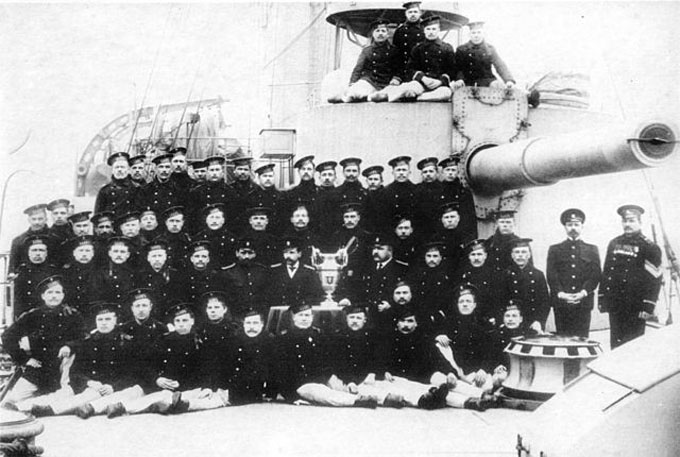
Bayan crew between 1911 and 1918
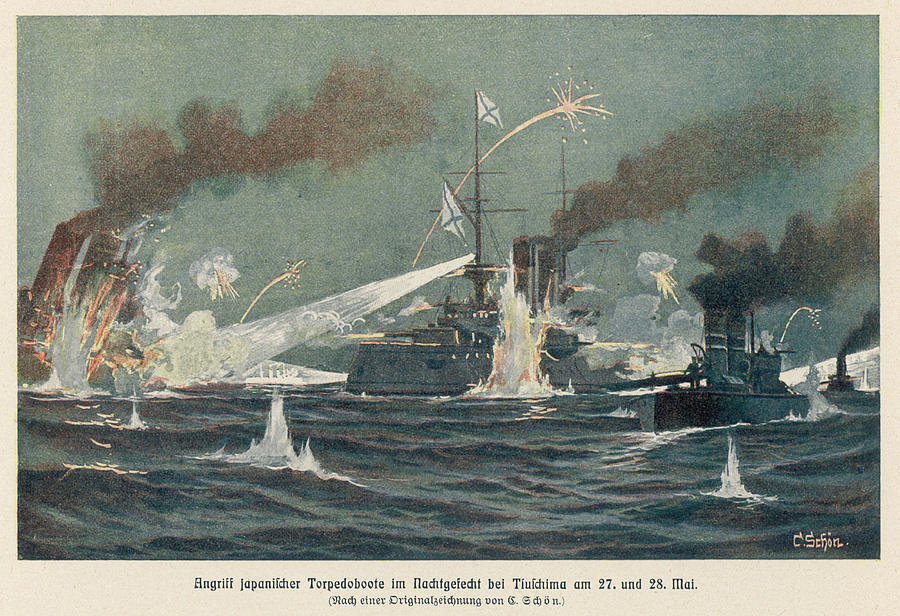
Battle of Tsushima
Wartime Russian cruisers
In August 1914, the Russian Empire entered the conflict with a fleet amputated from a third of her cruiser force after the crippling losses at Tsushima and in the Yellow sea nine years before. However, two of these captured cruisers would be acquired back from the Japanese in 1915-16, under the entente.
Captured Cruisers
Around 1916, new cruisers entered service (again for some). These are cruisers no longer listed as they were captured, repaired and integrated in the Japanese Navy (in the case of Peresviet and Variag), or captured Turkish cruiser, in the case of Prut.
Peresviet
The Russian battleship sunk at Port Arthur during the Russo-Japanese War and salvaged by the Japanese after fall of the fortress. Reconstructed during 1908-9 and commissioned as the coast defence battleship Sagami. She was returned to her old name and rerated as cruiser. Designated for the Arctic Ocean Flotilla, she was armed with 4-10in, 10-6in, 2-75mm AA. Stranded off Vladivostok on 5 April 1916, was not refloated before July. During the transfer to the Arctic on 4 January 1917 on 2 mines laid by U 73 off Port Said.
Prut
The Turkish protected cruiser Mecidiye) was mined 15 miles of Odessa on 3 April 1915 and sunk on an even keel. She was raised by the Russians and docked in the Ropit Yard, Odessa on 31 May 1915. Under the name Prut she was placed on the List 26 June and re-armament as well as reconstruction begun. She was to be armed with 6 x 130mm, 4 x 75mm AA, 2 MG but this was supplemented by additional 4 x 130mm in midship sponsons. The works were completed in January 1917 and she reached 17.9kts during sea trials. Seized by the Germans in Sevastopol and returned to Turkey on 12 May 1918.
Variag
The Russian cruiser scuttled after VARIAG protected cruiser action against Japanese cruisers off Chemulpo on 9 February 1904.
Raised by the Japanese and commissioned by them as the training ship Saya. Returned to the Russians at Vladivostok on 5 April 1916 she reverted to her old name while the armament was augmented by mount hulked. Sold for scrap 1920 but stranded again off Scotland and scrapped there during 1923-25. February 1917 for repairs and rearmament with 10-130mm but these were never carried out. Seized by the British on 8 December 1917 and beached off the Irish coast while in forecastle and quarterdeck 6in guns on the CL thus enlarging the broadside to 8 pieces. In June 1916 she sailed for the Arctic being armed at that time with 12-6in, 4-75mm, 2 MG, 3 TT. Arrived Liverpool in under tow but raised later and hulked. Sold for scrap in 1920 but strabded again off Scotland and scrapped there in 1923-25.
Aviation Cruisers
Also not listed here, although in Russian parlance they were called ‘Kreizers’, the Russian Empire also operated many “aviation cruisers”; To be fair, the first, Orlista was called a seaplane carrier, but she was followed by six ships, former auxiliary cruisers converted to operate seaplanes, which made the Russians the second largest operators of this kind of ships behind the Royal Navy during the Great War. As they will deserve their own post we will only see them sparingly:
-Orlista (1915). This vessel from Caledon, Dundee, launched in 1903 as SS Vologda, freighter, she was renamed Imperatrista Alexandra and converted in 1913. In 1915 she had two hangars and housed four seaplanes while a fifth one was stored inside the hold, which doubled as workshop. At her commission as Orlitsa in February 1915 she carried five FBA floatplanes, and M9 by 1916. She saw action in Courland and the Gulf of Finland, survived the war and was resold to the civilian amrket, name changed to Sovet in 1923. Fate unknown.
-Imperator Alexander class (1916)
Two liners purchased in UK, launched in 1913 and converted in 1914 as seaplane carriers, for the black sea fleet 29 November 1916. The holds were demolished and fusioned into a single very large hangar, roomy enough to carry nine seaplanes. In addition a flight deck was constructed aft. Soon after her planes spotted and sank the German coaster Irmingard. Alexander I was captured by the Reds and renamed Respublikanets in May 1917, while Nikolai I became Aviator. Tyhey were both recaptured by the Germans in Sevastopol in 1918, then under British control, scuttle to avoid captured in 1919.
-Regele Carol I (1916)
This Fairfield-built, 1898 2370 tonnnes ship was loaned by Romania from 1916, converted as a seaplane carrier. Armed with four 6-in (152 mm) guns, four 3-in (75 mm) and carrying four seaplanes into her holds. Sher served with the Black sea fleet until 1917 but apparently was returned to Romania in 1918 to retake civilian service.
-Rumania class (1916)
The second, third and fourth vessels loaned by the Romanians, they were all 18 knots steamers built at Ch. de la loire St nazaire (france), launched 1907 and commissioned in 1916. They received four 6-in, four 3-in and carried four to seven floatplanes, with a flight deck aft. They were returned in 1918 to Romania.
Early armored cruisers
General Admiral class
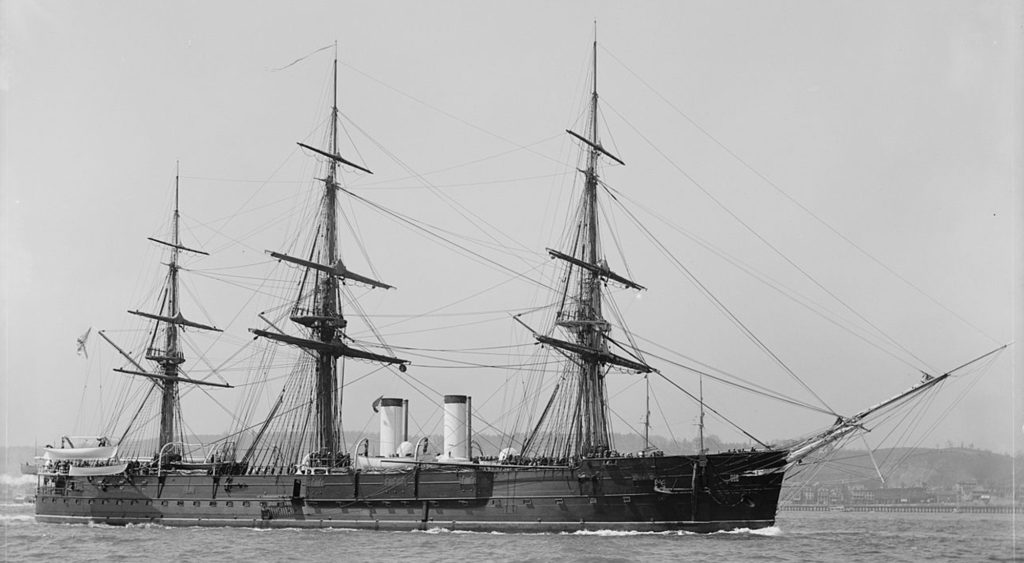
General-Admiral and Gerzog Edinburgski were two armored cruisers, at first laid out as central battery ironclads, later redesignated armored corvettes and eventually semi-armored frigates. With their armament concentrated amidships, they were seen by many authors as the first armoured cruisers. They were completed in 1877 but commissioned in 1875, as many modifications were made on the long run. As the the “first true armored cruisers”. These redesigns added to their oveall displacement, from 4,604 long tons (4,678 t), to 5,031 long tons (5,112 t) in the end, standard. They were fully rigged, and iron-hulled, with an underwater ram. They had a vertical compound steam engine driving a two-bladed, 6.25 m propeller, fed by cylindrical boilers.
They produced 4,772 indicated horsepower (3,558 kW) at around 60 psi. This was enough to propel them to 12 knots (22 km/h; 14 mph). Both ships carried 1,000 long tons of coal for an overall range of 5,900 nautical miles (10,900 km; 6,800 mi). To avoid excessive drag under sails, the single funnel and propeller were retractable. Both differed by their armament: General-Admiral featured 8-inch (203 mm) guns plus two 6-inch (152 mm) guns and four 87 mm (3.4 in) QF RBL while Gerzog Edinburgski was given 107 mm (4.2 in) guns instead. The armored belt and decks ranged from 5 to 6 inches amidships. General Admiral missed the Russo-Turkish War of 1877–78 due to an accident and repairs.
She was reboilered in 1886 after service in the Mediterranean, having two new funnels, not retractable, as the new propeller. She became a school ship from 1906 with a reduced rig. The Edinburgski served in the Far East from 1879 to 1884 and in the Mediterranean Sea from 1897 until 1900. During this time she also served in Crete with International Squadron. Like her sister-ship she was converted into minelayers in 1908–11. Both were renamed Narova and Onega. They had their superstructures reduced, two pole masts and four 75-millimeter (3.0 in) guns while they were given rails to carry 600–800 mines. Onega was hulked in 1915, and ended as mine storage ship in Helsinki in 1917. She was hulked in 1915 as a depot ship, renamed № 4 Barrikada after the Bolshevik Revolution, broken up in 1949.
Minin
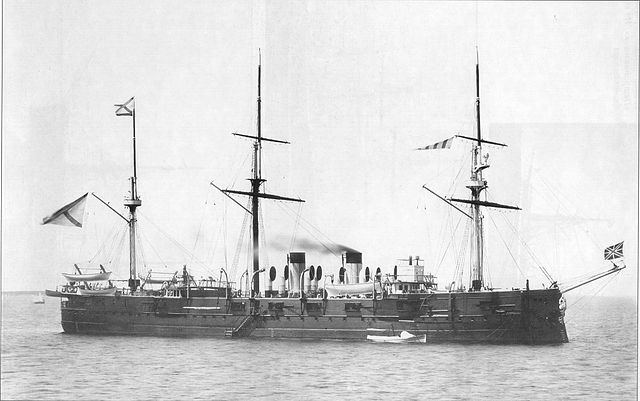
The Minin was originally launched as a low freeboard turret ship, intended to be similar to the Captain with full rig, 4-1 in guns in twin turrets and 4-6in, 2 on the forecastle and 2 on the poop. After the disaster to the Captain in 1871 her completion was stopped and she was reconstructed as an armoured cruiser. There was a complete waterline belt from 2 ft above to 5ft below lwl with a lin steel deck at the belt upper edge, but the guns were unprotected on the upper deck with the 8in in sponsons.
The Minin was sheathed and coppered and heavily ship-rigged. Her details were altered several times, a report of 1893 indicating 30 cal 8in and 28 cal 6in guns with the addition of 8-3pdr revolvers. Later, as a training ship the 8in and 6in were replaced by 10-6in/45. She was also reboilered with 18 Bellevilles and her rig reduced to that of a barque. In 1909 she became the minelayer Ladoga with a capacity of 900 mines, and was sunk in the Baltic on a mine laid by UC4. Read More about the Minin
Vladimir Monomakh (1882)
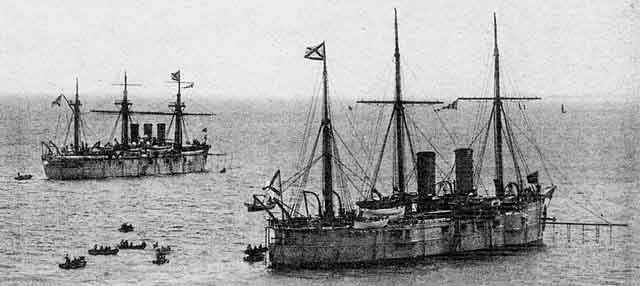
Monomakh and Pamiat Azova
Originally, with a heavy full rig, Monomakh had a complete 6in belt, with a 4 in lower edge from 2}ft above to 5ft below lwl. There were 4-3in bulkheads between the main and upper deck protecting 8 of the 6in guns from raking fire and also the 4 sponsoned 8in, but otherwise the guns were unprotected. The armour deck was 3in-2in. The Monomakh was modernised in 1897-1898 and rearmed with 5-6in/45, 8-4.7in/45, and 8-3pdr, retaining the lpdrs and TTs. She was torpedoed during the
night at Tsushima and surrendered next day but could not be kept afloat.
Vladimir Monomakh started as a semi-armored frigate, an improved version of the preceding Minin. She was named after Vladimir II Monomakh the Grand Prince of Kiev and spent most of her career in the Far East. She was fast enough to outrun enemy battleships while well armored enough to face any cruiser of the time. She was iron-hulled, with a ram, and sheathed in wood and copper for anti-fouling. Her hull was particular as being subdivided by ten transverse bulkheads with a double bottom. It was an avant-garde ASW protection long before the age of submarine. She was propelled by two hsaft vertical compound steam engines, fed by six cylindrical boilers at 70 psi. They produced together 7,044 indicated horsepower (5,253 kW), enough to reach 15.8 knots (29.3 km/h; 18.2 mph) while carrying 900 long tons of coal, setting her range to 6,200 nautical miles (11,500 km; 7,100 mi). She was rigged as a three-mast barque, with a total of 26,000 square feet (2,400 m2), and to reduced drag like previous ships, had rectratable funnels. These were deleted when the ship was reboilered later.
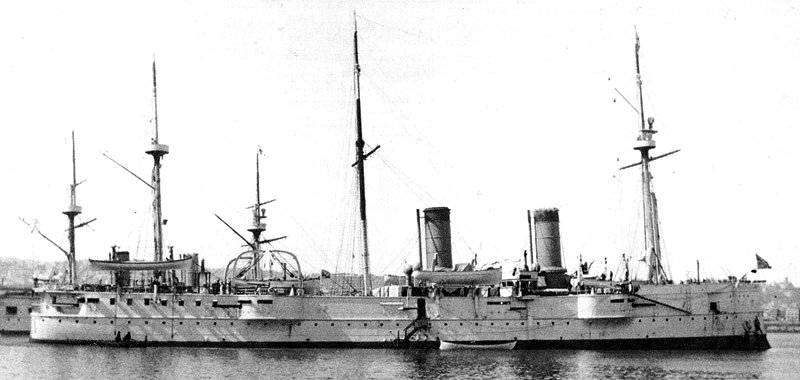
Vladimir Monomakh after her 1892 refit
Vladimir Monomakh was armed with four single 8 in (203 mm) guns in a “X” central battery position in sponsons. This was completed by twelve single 6 in (152 mm) guns (eight mounted in the central battery), the remaindr outside the battery at the ends of the ship. The cruiser lighter armament also comprised four single 9-pounder guns and ten single Hotchkiss guns plus three 381 mm (15 in) torpedo tubes above the waterline. Armour comprised a waterline belt was composed of compound armour extending over the whole lenght. It ranged from 6 inches around the battery and was lowered to 4.5 inches (114 mm) to the ends. The transverse bulkheads were 3–4 inches (76–102 mm) thick and the sponsons barbettes were 8-in while the protective deck was reduced to only 0.5-inch (13 mm). Clearly plunging fire was not a priority at that time.
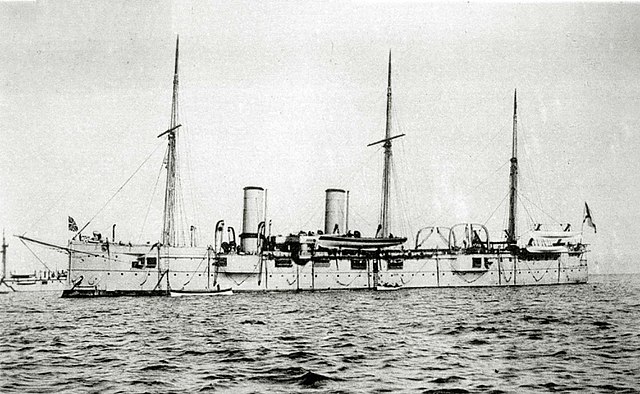
Vladimir Monomakh 1905
Vladimir Monomakh was completed at the Baltic Shipyard in St. Petersburg on 13 July 1883. She made a first trip from the Baltic Sea to the Far East. Arriving at Vladivostock she became was the flagship of the Russian Pacific Fleet under Rear Admiral A.E. Kroun. She made another voyage in the Mediterranean in 1889, after being refitted. In 1892, after yearly service in the Mediterranean and blak sea she was refitted at Kronstadt, when her heavy sailing rig was replaced by three signal masts, funnels fixed and boilers changed. In 1895 she headed with Captain Zinovy Rozhestvensky at her command for the Mediterranean, before departing for the far east when the Sino-Japanese war broke out. She sailed to the port of Chefoo and became the rear admiral ship, Pacific Fleet, raising the ensign of Rear Admiral Yevgeni Ivanovich Alekseyev. She was stationed in Kobe in 1896.
Vladimir Monomakh was however the Baltic at the start of the Russo-Japanese War. She was assigned to the Third Pacific Squadron and participated in the Battle of Tsushima in May 1905. She was tasked to protect the Russian transports and was not heavily engaged during the daylight portion of the battle. The ship was torpedoed during the night and was scuttled the following morning by her captain to prevent her capture by the Japanese.
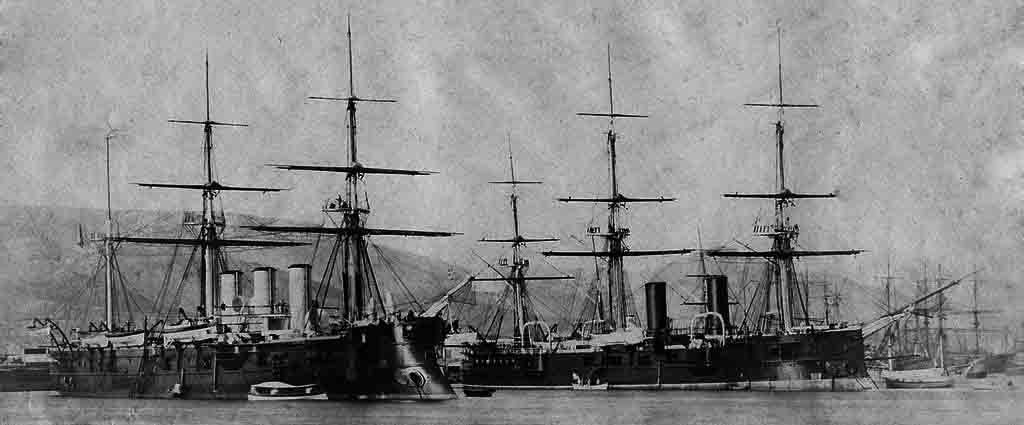
Monomakh and Pamiat Azova in Pireus, Greece
Dmitri Donskoi
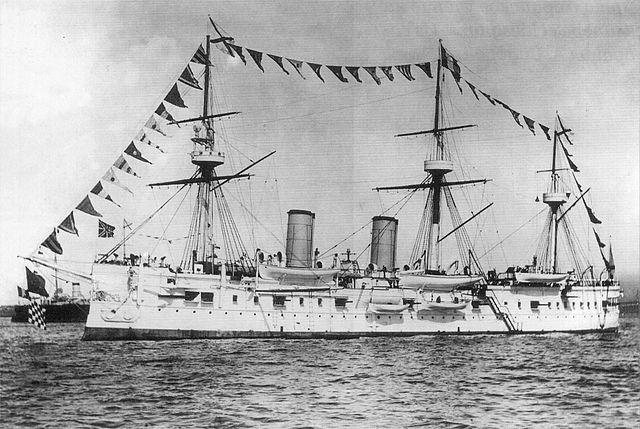
According to official British reports the Donskoi, which originally had a heavy full rig, was not well subdivided and if the very large engine room had flooded she would have sunk. The belt was as in the Monomakh and there was a 2in deck, but the 14 6in guns on the main deck had no protection and the two 8in in deck sponsons only small 2in shields.
She was modernised in 1895 and rearmed with six 6in/45, ten 4.7in/45, six 3pdr, and ten 1pdr, retaining the revolvers and TT. The Donskoi survived Tsushima and a destroyer attack on the night of the 28th but was scuttled next morning.
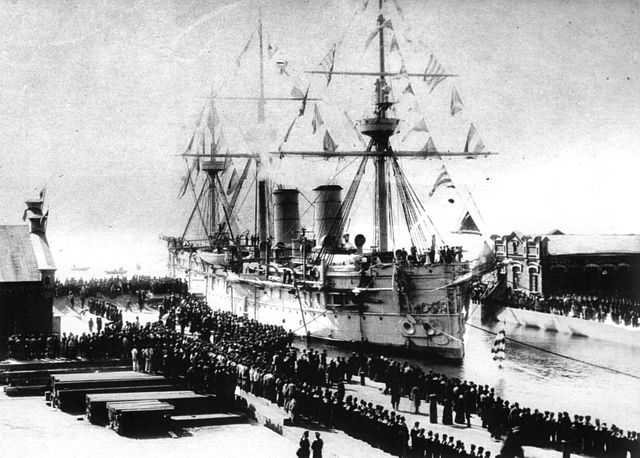
Admiral Nakhimov
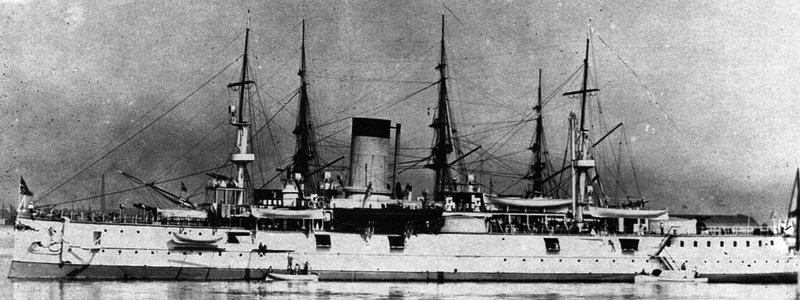
The Nakhimov was in many ways a close copy of the Imperieuse and Warspite, of which the Russians had managed to obtain drawings, though they contrived, by alteration of bunkers and hatches, to impair the protection of the machinery. She was sheathed and coppered and originally rigged as a brig. The belt was 147ft long with a 6in lower edge and extended from
about 3ft above to 5ft below lwl, ending in 10in-6in bulkheads. The barbettes were 8in – wing 8in-7in – to the main deck with 3in ammunition tubes below, and two 2-in shields, but the 6in guns on the main deck were unprotected.
The armour deck was 3in over the belt and at the level of the belt lower edge fore and aft. The Nakhimov was reboilered in 1899, the 3.4in removed and the lighter guns altered to twelve 3pdr and four 1pdr revolvers. She appears to have escaped serious shell damage at Tsushima but was torpedoed during the night and her crew opened the sea-valves on surrendering to the Japanese.
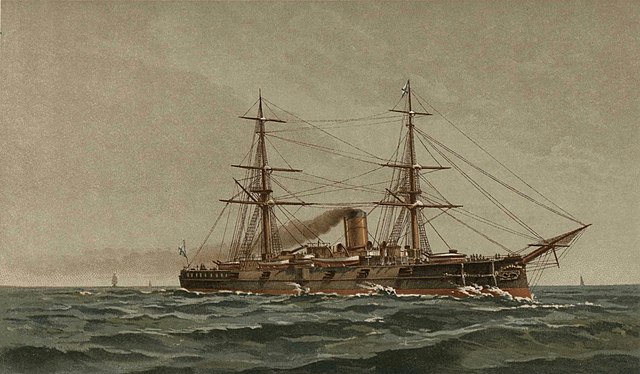
Pamiat Azova
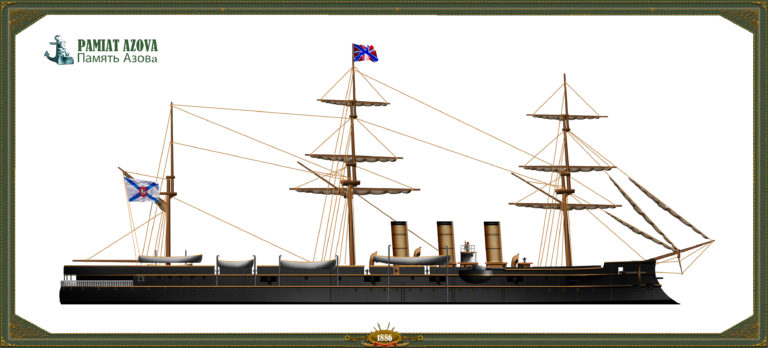
Author’s illustration of the Pamiat Azova – Read More
A three-funnelled ship, sheathed and coppered and originally barque-rigged without royals. The belt stopped 45ft from the stem and 35ft from the stern and extended from 2 ft above to 5ft below lwl. It was 6in amidships, reduced to 4in fore and aft and at the lower edge, and ending in 4in bulkheads. The 8in guns in sponsons had small 2in shields while the main deck 6in were unprotected. The armour deck was 23in reduced to 1lin at the ends. The Pamiat Azova was reconstructed in 1904 and reboilered with 18 Bellevilles. Russian official figures, of uncertain date, give only 5,664 ihp for 16kts. She became the torpedo school ship Dvina in 1909 and was torpedoed by CMB79 in the attack on Kronstadt.

The Russian Imperial Navy in WW1 – Helps us support Naval Encyclopedia !
Early Russian masted protected Cruisers
Variag class (1862)
These wooden screw corvettes are often assimilated as the earliest ancestors of Russian cruisers. They were slow under sail, and Vitiaz was renamed later Skobeleff to free the name for better ships. Variag possessed the old engines of the reformed frigate Balkan. After the fight at Hampton roads bwteen the Merrimack and Monitor, there were serious doubts about proceeding with the construction of unarmoured ships and the Askold narrowly escaped cancellation. They were the last Russian unarmoured warships of above 2000 tonnes built for 20 years. Laid down in 1861-62; launched in 1862-63 they were completed in 1863-64, and served with various armaments, confined to roles of training vessels and accomodation ships until BU circa 1887-94.
Pamiat Merkuria (1879)
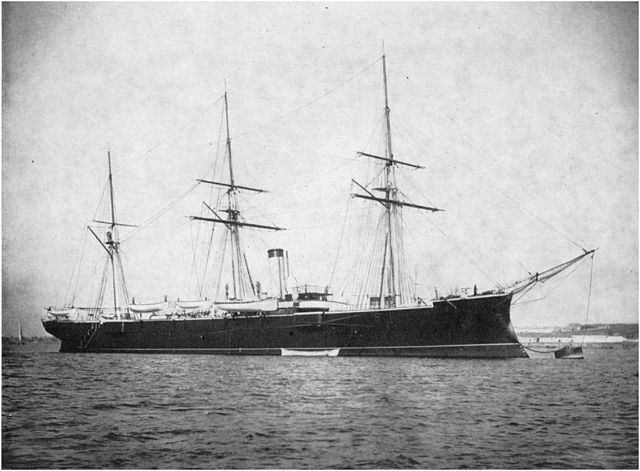
Pamiat Merkuria with her original barque rig
This was the first “modern” iron hull, unprotected masted Russian cruiser. She was made for the Black Sea Fleet. Originally named Yaroslav, the Pamiat Merkuria was a barque-rigged, unprotected steel and iron cruiser with a projecting ram bow. She was reckoned to be a good sea-boat. The 6in guns were without shields, and were located at bow and stern with four in upper deck sponsons. The smaller guns eventually comprised 4-3pdr, 2-1pdr and 2-1pdr revolvers, with 2 TT.
Vitiaz class protected cruisers (1884)
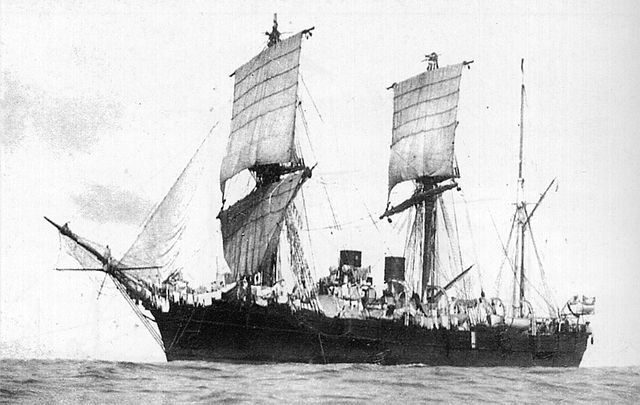
Vitiaz under sails
The original Vitiaz and Rynda were the first Russian protected cruisers. Wooden-hulled screw corvettes with full rig, Vitiaz being very slow under sail. Vitiaz was later renamed Skobeleff. Variag had the engines of the older screw frigate Balkan. After the actions in Hampton Roads there was considerable doubt whether to proceed with the Askold, and she was the last unarmoured warship of over 2,000t laid down in Russia for 20 years. The armament was frequently changed and in 1884 was: Variag 1-6in/23, 10-4.2in/20; Vitiaz 8-6in/23, 4-4.2in/20; Askold as Vitiaz, with one 3.4in and spar torpedoes.
The 1884 ships of the same name were steel and iron-hulled partly protected cruisers with clipper bows and barque-rig. They were heathed and coppered. Rynda at least is believed to have shown signs of weakness and to have been strengthened. Protection was limited to a 1in deck over boiler and engine rooms. The 6in guns were on the upper deck with four in sponsons and three on each
side. Rynda was latterly a training ship, and 1901 reports give her as 4-6in/28, 2-3.4in, 2-11pdr, 10-1pdr revolvers and 4-15in TT. She was reported to have had diesel engines fitted as experimental ship in 1911.
Protected cruiser Admiral Kornilov (1887)
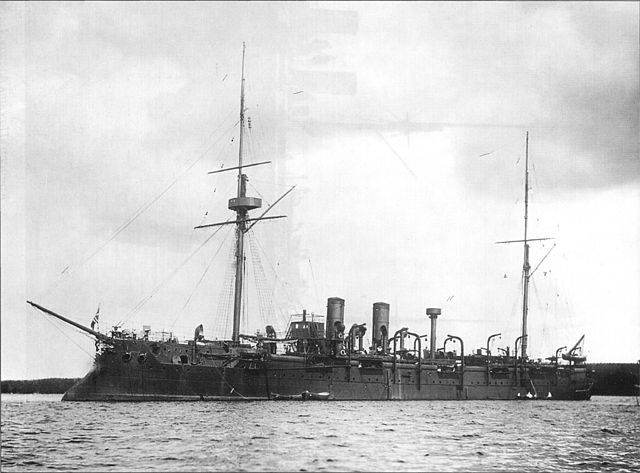
A steel protected cruiser, sheathed and coppered, with a pronounced ram bow and originally rigged as a barque. There was a 2 in-lin deck with 3in CT and 4lin-3in engine room hatch glacis, but the 6in guns had shields only. These were on each side of the upper deck with the end guns in slightly projecting sponsons. For most of the waterline there was a cofferdam filled with coconut fibre. The Kornilov was rearmed in 1904/1905, 10-6in/45 replacing the 14 older guns, and from 1908 onwards was a torpedo school ship.
Protected cruiser Svetlana (1896)
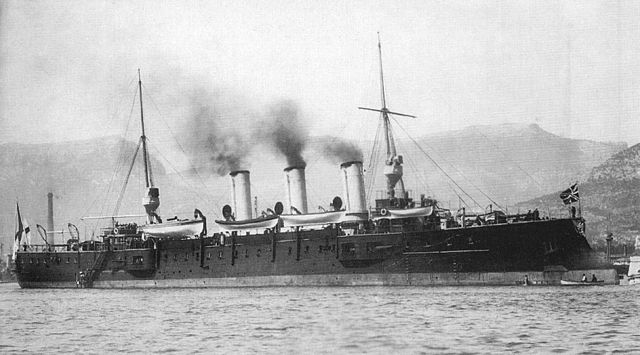
A three-funnelled cruiser with a pronounced ram bow, and sheathed and coppered, the Svietlana was in peacetime fitted out as a yacht for the Grand Duke commanding the Russian Navy, and had a considerable amount of woodwork installed. There was a lin deck with 2in slopes, a 2in hood over the engine room and 5-in glacis to the hatches. The CT was 4in and the ammunition tube to the
forecastle 6in gun and the broadside patches protecting the TT were 2in. Four of the 6in guns were in main deck sponsons and two fore and aft on the upper deck. Svietlana was sunk on the day after Tsushima by the Otowa and Niitaka.
1890s Masted armored cruisers
Rurik (1894)
Although the Rurik caused a considerable stir when first built, she was a thoroughly unsatisfactory design with only half her armament available on the broadside, inadequate protection and poor compartmentation. The belt was 320ft long, 6ft 9in wide and 10in-8in reduced to 5in at the lower edge and ending in 10in-9in bulkheads which were taken to the upper deck. The 8in guns in sponsons, the 6in on the main deck and the 4.7in on the upper deck were protected by shields while the heavy bulkheads gave some protection to 14 of the 6in.
The armour deck was 2-in over the belt, increased to 3bin forward and 3in aft. Rurik was barque-rigged and sheathed and coppered. She was sunk at Ulsan by 8in and 6in shells from the Japanese cruisers.
Rossia & Gromoboi (1896)
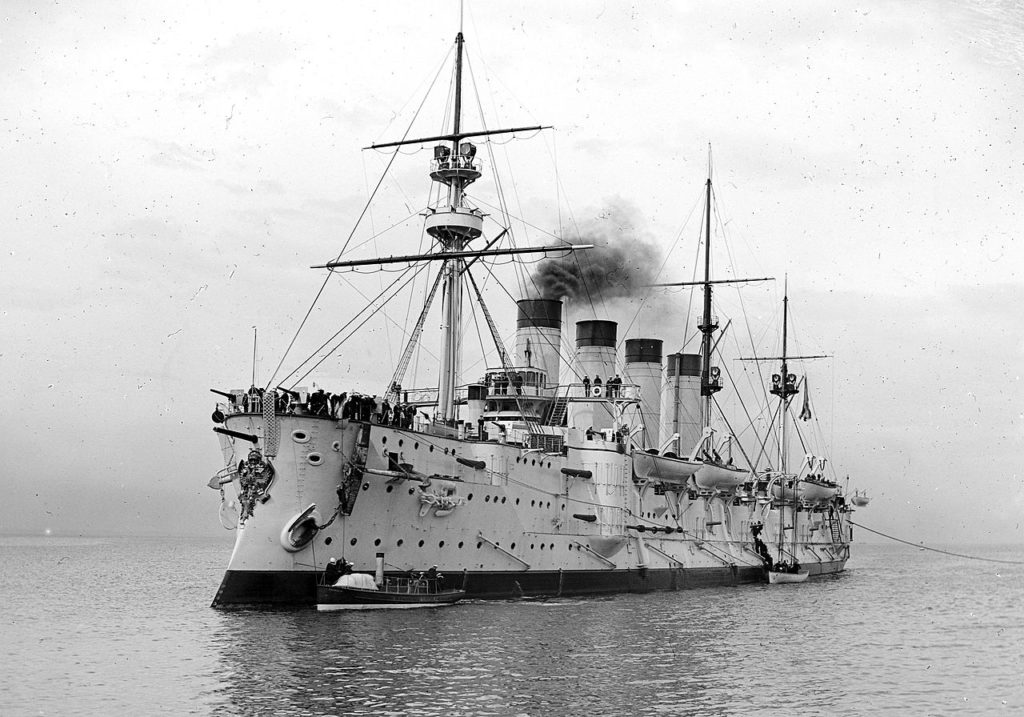
Gromoboi visiting Australia, 1901
An unfortunate design, though an improvement on the Rurik. The armour belt ran from the stern to 80ft short of the bows, and from 4ft 6in above to 4ft below lwl. It was 8in-6in with a.4in lower edge and a 7in fore bulkhead. A patch of 5in side armour above the belt, with a Sin bulkhead forward, protected the engine rooms, with, in addition, a 3in glacis between
lower and main decks. Apart from the battery bulkheads the guns had only thin shields, lin traverses and lightly
armoured hoists for the 8in. The mild steel armour deck was 3 in over the belt and 2in forward. The 8in guns
were in sponsons on the upper deck with 3-6in forward under the forecastle, 6 on each side of the main deck and 1 aft. At full power only the 2 wing shafts were used, giving the ihp quoted above, as there was insufficient boiler powe to use the 2500 ihp centre engine in addition, and this was kept for cruising with the wing screws disconnected.
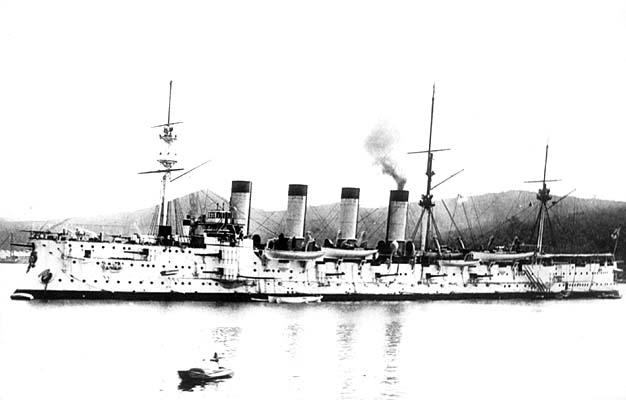
The Rossia, which was sheathed and coppered, was rearmed to some extent in 1906, 6-6in being added in sponsons on the upper deck while the foremost 6in was remounted on the forecastle and the lighter guns reduced to 15-11pdr and 2-3pdr, with 2 TT. In 1916-1917 the 6in were reduced to 14 and 2-8in added at bow and stern to give a total of 6. She was considerably damaged by the Japanese armoured cruisers at Ulsan in 1904 and had heavy casualties but could still steam well. In the First World War she was employed in the Baltic, at times as a minelayer with 100 mines.
The Rossia, often confused with Gromoboi, very similar, differed from the latter by many aspects which justify its separate description: Overall, it was a derivative of the Novik, the latter being a mixed cruiser-battleship (sail and steam), while the masts of the Rossia had only a reduced sail. It had four funnels, and its short forward mast had an armored top. Its displacement and its size reached summits, and the Royal navy, which worried about it ordered the two Powerfuls.
Its original armament included 12 pieces of 76 mm against 24 on the Gromoboi, the latter having only 4 pieces of 47 mm against 20 on the Rossia, and 4 of 37 mm against 14 on the Rossia. Their distribution was also different, the secondary pieces of the Rossia being in side ports, while those of the Gromoboi were in barbettes giving them a better shooting range. In addition, the belt armor was lower on the Gromoboi, the latter, built in the same shape as the Baltic shipyards two years later (accepted in service in 1900) was significantly slower.
The two units took part in the Russo-Japanese War: They were present at the battle of Uslan and seriously affected, but resisted enough to escape with all steam with many victims. Returning to the port, they were nicknamed “tin strainers”. Their protection was judged disappointingly afterwards. In 1906, they took advantage of their repair to rearm them with 6 pieces of 152 added, replaced in overhangs, and the tertiary armament reduced to 15 x 76 mm and 2 x 37 mm, with two TTs instead of the original five on Rossia (for Gromoboi, see file). They served in the Baltic during the Great War and were broken up in 1922.

Russian cruiser Rossia – Author’s illustration
Read more about the Rossia
Modern Russian armored cruisers
Bayan class (1896)
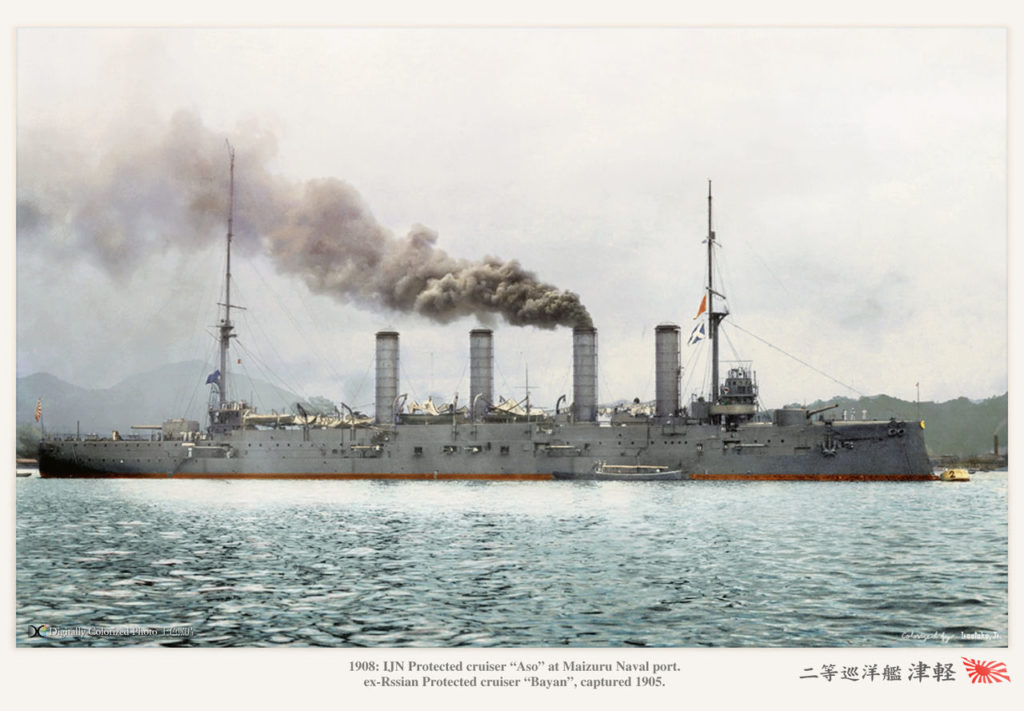
Aso, ex-Bayan in IJN service. She was back in the Russian Navy under her old name in 1916. Colorized by Iro Ootoko
Medium-size armoured cruisers of better design than such ships as the Rossia. The main belt ran from the stem to the after turret and from 2ft above to 4ft below lwl, ending in a 7in-8in bulkhead. The belt was reduced to 4in at the lower edge and ends. The upper belt was 23in to the main deck as were the casemates for the 6in guns and the midships battery for 8 of the 11pdrs. The armour deck was a uniform 2in. The first Bayan took part in the Russo-Japanese war, being mined on 27.7.1904, and was sunk at Port Arthur by 11in howitzers on 8.12.1904. She was raised and served in the Japanese Navy as the Aso.
In the First World War Pallada was blown up by a torpedo from U26. The remaining two ships had two 11pdr or two 3pdr AA added and when used as minelayers could carry up to 150 mines. Bayan (ii) took part in the action off Moon Sound on 17.10.1917 when one 12in hit from the König caused a serious fire.
Rurik (ii) (1906)
The Rurik was one of the great prides of the Russian navy in 1914. It was certainly one of the most powerful and modern ships in its class, foreshadowing in many ways the dreadnoughts under study. The name comes from the chief of the Viking tribe of the Rus established from 862 onwards by forming the first Slavic state of Novgorod, his son becoming the ruler of Kiev.
The previous Rurik no longer existed when the ship was put on hold at the Vickers Chantiers Anglais in August 1905: The 1892 mixed cruiser-battleship had just been sunk a year earlier at Ulsan during the Russo-Japanese War. By its general design, both compact and broadly dimensioned, the Rurik project interested Vickers yards as a testing ground, and cut across previous Russian productions (he participated in the review of the Spithead in 1909, something rare for a foreign cruiser ).
The shielding, without being very important, was judiciously distributed, moreover forming a double armored bridge with formwork within the building, which had almost no weak point. The disastrous results of the Russo-Japanese War weighed heavily on the Russian recommendations. The new Rurik was launched on November 17, 1911 and completed in September 1908, then accepted into service in July 1909, the time to remedy its problems with barbettes. In 1911, its silhouette changed somewhat, an important front mast being assembled, later becoming tripod, with a blockhouse of direction of shooting installed in 1917, and a piece of 40 mm AA.
The Rurik had been operating since 1908 as the flagship of the Baltic fleet cruiser squadron. It was modified to carry mines, up to 400 according to certain sources. She was accidentally stranded on February 13, 1915 at Gotland, then struck by a mine on November 19, 1916, seriously damaging the rear part of the live works. She was put in reserve in 1918 and finally demolished in 1923.
Specifications
Displacement 15,200 t standard
Dimensions 161.23 x 22.90 x 7.90 m
Propulsion 2 shaft mach. VTE, 28 Belleville boilers, 19,700 hp. 21 knots max.
Armor: CT 203 mm, decks 75 mm, turrets 203-178-152 mm, battery 76 mm, belt 104-152 mm;
Crew: 750 men.
Armament: (Aurora, 1914) 4 x 254 mm (2×2), 8 x 203 (4×2), 20 x 120 mm, 4 x 47 mm, 2 x 457 mm TTs (sub)
WW1 era protected cruisers
Pallada class (1899)
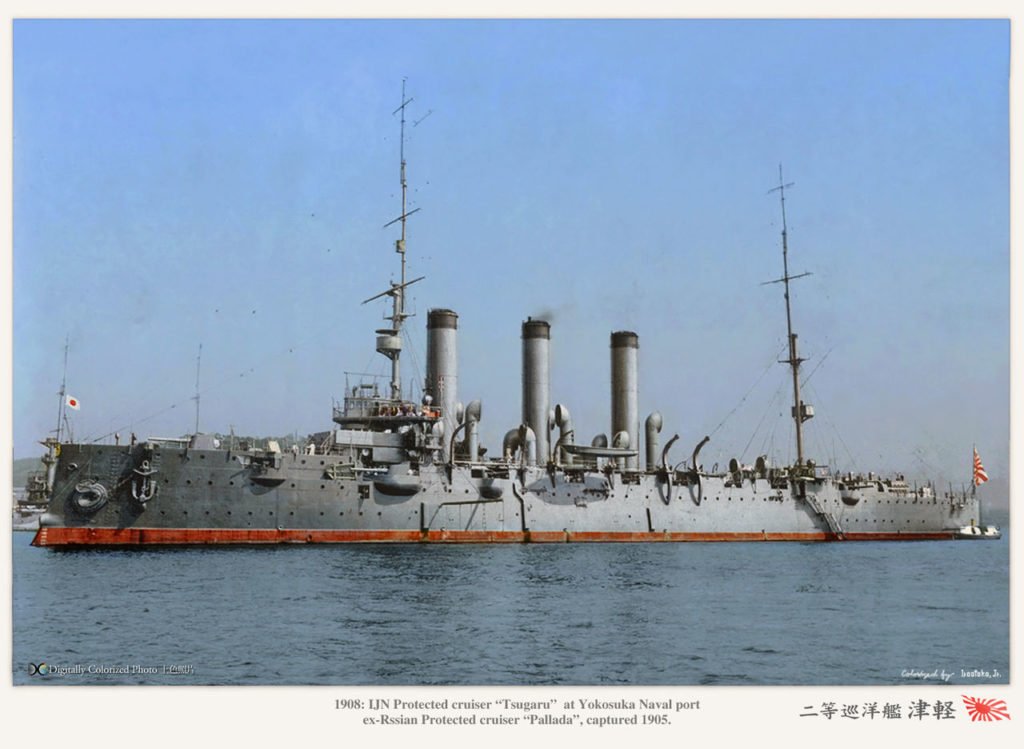
Pallada class (here, the Aso in Japanese service).
She was undoubtedly the most famous class of Russian cruisers, more for historical than technical reasons. The fact that the Aurora, anchored today on the Neva in Saint Petersburg (aurora.org.ru) was one of the few cruisers of this preserved era largely contributes to this. The Pallada and the Diana were ordered in 1895 from the Galernii shipyards (the Aurora in 1897 from the shipyards of the new Admiralty). Much more spacious than the Svetlana of 1896, they were also well armed, with a 76 mm battery in port and barbettes, and eight 152 mm (6-in) instead of 6. They were classified among the protected cruisers, and not armored.
The Pallada, completed in 1902, was quickly sent to the Pacific. She was in Port Arthur the night of February 8 to 9, 1904 during the attack on the Japanese torpedo boats. She survived an impact by a miracle, but was sunk by the Howitzers deployed by the Japanese infantry of the siege army on December 8. After the capture of Port Arthur, Pallada was raised, repaired summarily, taken to Japan for further work and renamed Tsugaru. She was in service by 1914 in the Imperial Japanese Navy, not purchased back by Russia and was broken up in 1923.
The Diana and the Aurora were in the Baltic fleet, constituting the 2nd brigade of cruisers. The Aurora had gun shields upon completion, and was rearmed with two 152 mm guns, losing four 75 mm and her torpedo tubes, with reduced rigging. Diana in 1914 received ten 130 mm and four 75 mm, her torpedo tubes were removed, and her 37 mm QF guns were removed later in favor of two 75 mm AA. In 1916 and until February 1917, Aurora was docked for rearming with four additional 152 mm guns and one 75 mm AA instead of the 37 mm. Diana was reformed in 1918 and sold in 1922, while Aurora, drowned in Bolshevik elements, launched the revolution of February 1917, the mutineers supporting the revolutionaries with her guns in St Petesrburg. Rearmed in 1923, she was preserved in 1948.
Specifications
Displacement: 6600-6800t
Dimensions: 126.70 x 16.7 x 6.35-6.55 m
Propulsion: 3 propellers, 3 mach. VTE, 24 Belleville boilers, 12,000 hp. and 19 knots max.
Armor: 152 mm Blockhouse crew, 51-65 mm bridges; Crew 576 men.
Armament: (Aurora, 1914) 10 guns of 152 mm, 20 guns of 76 mm, 8 guns of 40 mm, 3 x 381 mm TTs (sub)
Variag (1899)
The Varyag was built during the 1898 naval programn, and the Russian Imperial Admiralty contacted William Cramp and Sons in Philadelphia, Pennsylvania for the construction of the new cruiser. Work started on August 1, 1898, and the new cruiser was launched on October 31, 1899. She left the United States on March 10, 1900 and headed for Russia. On May 19, 1901, after taking commission, she received Nicholas II of Russia.
In November 1901, Varyag was transferred to the Far East, Pacific fleet. When the Russo-Japanese War started the cruiser and the gunboat Koreets were based in the neutral Korean port of Chemulpo. To avoid any interference the Japanese admiral Uriu Sotokiti at the head of a fleet comprising the cruisers Asama, Naniwa, Takachiho, Chiyoda, Akashi, Chihaya and eight other vessels, blocked Chemulpo. Koreets attempted to reach Port-Arthur but never passed the barrage and was constrained to return to port. A day after an ultimatum was presented to the Russian kontr-admiral Vsevolod Fiedorovich Roudnev, the latter decided to set sail anyway, forcing the admiration of the international fleet present. The Japanese admiral and his fleet, posted off Yodolmi island reiterated the order to surrender his ships to the Russians, ignored once more, which resulted in the Japanese opening fire.
The duel was intense, at around 9000m, lasting for 50 minutes. It was an amazing feat of bravery given the odds. During this fight, the Varyag would send 1,105 shells, sinking a IJN destroyer, and damaging, according to him, the Asama, Chiyoda, Takachiho and Naniwa for the alleged loss of around 30 dead and 20 wounded. The Varyag however was hit eleven times, including three times below the waterline, and an officer, thirty sailors are killed, whereas six officers and 85 sailors were injured and 100 more slightly injured. Damage was too great to break through, and both ships returned to port. The captain would later order to scuttle her.
Captured by the Japanese and raised in 1905, Varyag was repaired and integrated later as Soya. She served as a cadet training ship and made frequent trips to Hawaii and the US West Coast. After WW1 broke out she servd in the home islands and patrolled the Pacific. Eventually in march 1916, she was resold to Russia for 4 000 000 yens, renamed Varyag. She was held at Murmansk in the arctic and later sent to Liverpool shipyard for modernization when the revolution broke out. As the modernization was led by the British and were left unpaid by the Soviets, the British seized the ship which was ultimately resold to a german company for breaking up in 1920.
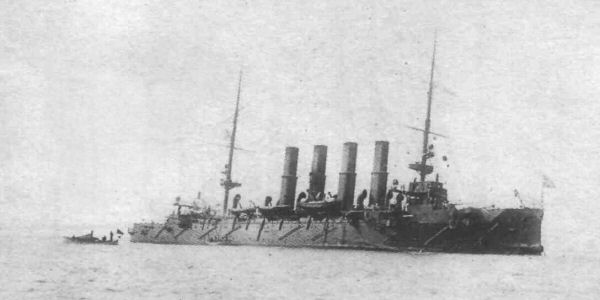
The Varyag after the battle of Chemulpo
Displacement: 6,500 t standard
Dimensions: 129.50 x 15.09 x 5.9 m
Propulsion: 2 shaft VTE, 30 boilers, 10,000 shp. and 23 knots max.
Protection: 40-75 mm
Crew: 20 officers and 550 sailors
Armament: 12 x 152 mm, 10 x 80 mm, 2 x 47 mm, 6 x 457 mm TTs.
Askold (1900)
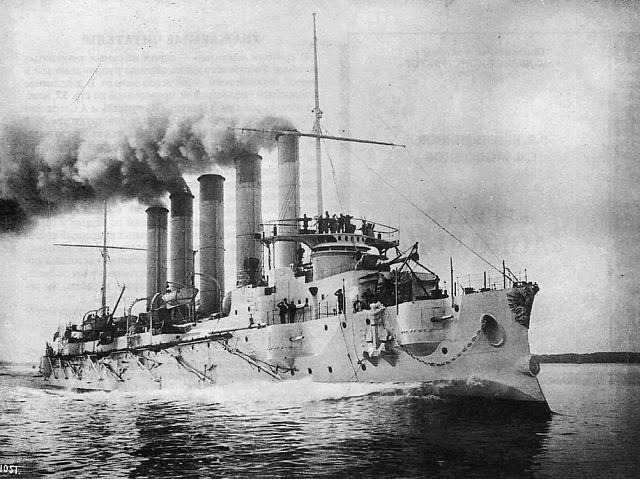
This large protected cruiser built in Germany became universally known for her unique silhouette, due to its five tall chimneys, a configuration never seen before, but also a sign of its high speed. She had a continuous deck hull, of decreasing height, a short superstructure packed forward, and most of the parts on deck rather than barbettes. Its 152 mm battery well supplemented made it a formidable building. There was a protective bridge of 51 mm running along the entire length with slopes of 76 mm and a glaze above the machines of 100 mm, and the tubes of ammunition and torpedo tubes 12 to 63 mm. Started in Krupp in 1898 and completed in 1901, it gave full satisfaction to its sponsors, and took part in the Russo-Japanese War: He was forced to flee during the action of the Round Island and took refuge in Shanghai where he was interned. Returned to Russia, he was then assigned to the Siberian squadron, as a flagship in 1906.
He then joined the Pacific, then from there the Mediterranean at the start of the war, making a journey of 102,000 km, and participated in the Dardanelles operations, nicknamed by the allies “packet of Woodbines” (cigarettes then in vogue among the English). She then served in the Baltic, being assigned there on October 21, 1916, but was modified and transformed in Toulon then in Great Britain on the way, losing all his artillery of 47 and 30 mm, while he was grafted two pieces of 75 mm in stern, two 47 mm AA, 4 new TLT of 457 mm in place of the old ones, two bridge rails for mines and two ASM grenade traps. He did not arrive until September 1917. Three times later, he served with the “reds”. Captured by the Royal Navy, he served from June 14, 1918 under the Jack Union as “Glory IV”. It was then returned to the Soviets in 1921 and demolished in Germany.
Displacement: 5905t standard
Dimensions: 133.20 x 15 x 6.20 m
Propulsion: 3 shafts VTE, 9 Schultz-Thornycroft boilers, 20,420 hp. 23.8 knots max.
Armor: CT 152 mm, decks 51-100 mm
Crew: 576 men.
Armament: 12 x 152 mm, 12 x 76 mm, 8 x 47 mm, 2 x 40 mm AA, 6 x 381 mm TTs (sub)
Bogatyr class (1901)
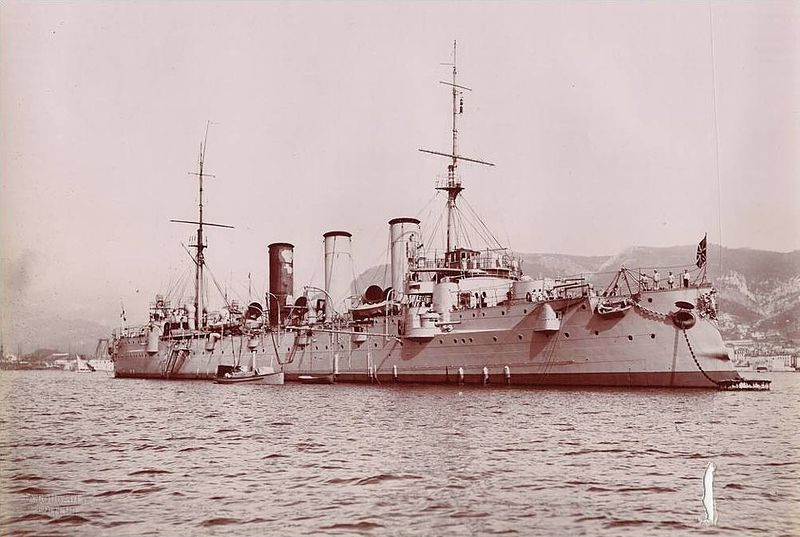
Bogatyr by Bougault
This class of cruiser was developed before the Russo-Japanese War, and started in 1898-1901 in four shipyards to serve in the Black Sea (Ochakov and Kagul, later renamed Kagul and Pamiat Merkuria following the mutiny of November 12, 1905 in Sevastopol), and in the Baltic (Bogatyr and Oleg). Their armament was divided into double turrets at the front and at the rear and side barbettes, and they were better protected than the other Russian cruisers. The Bogatyr was the only one built in Germany (at Vulkan, near Stettin). It was in service as early as 1902.
Only Bogatyr and Oleg were operational before the war against the Japanese Empire, and sent to the Pacific, but they were not damaged. All four were on the other hand in service in August 1914, the two cities being affected again in the Baltic, and the two others in the Black Sea. The latter saw one of the most serious mutinies of the fleet, with that of the Potemkin, the Ochakov confronting at anchor loyalist vessels and being seriously affected.
In 1907 she was renamed Kagul, which forced the other Pamiat Merkuria to be renamed. The two Baltic units assigned to the 1st cruiser brigade, and in 1916 received new armament comprising 16 pieces of 130 mm including 8 on the main deck, 4 in double turrets and 4 in casemates, 4 of 75 mm AA and 100 mines. During the revolution, both were taken by the Bolsheviks and served until 1919. The Oleg was sunk by the torpedo boats CMB-4 during the night attack of the Royal Navy in Kronstadt on June 17.
Merkuria was rearmed with 4 x 152 mm added and two 75 mm AA instead of her initial battery, but not Kagul. The latter was renamed Ochakov under the red flag in 1917, but these two units later displayed the Ukrainian flag. They then passed to the Germans, then to the British, the Ochakov was renamed Kornilov and operating in the Wrangel fleet. The recaptured Merkuria was renamed Komintern and served until 1942.
Displacement: 5905t standard
Dimensions: 133.20 x 15 x 6.20 m
Propulsion: 3 shafts VTE, 9 Schultz-Thornycroft boilers, 20,420 hp. 23.8 knots max.
Armor: CT 152 mm, decks 51-100 mm
Crew: 576.
Armament: 12 x 152 mm, 12 x 76 mm, 8 x 47 mm, 2 x 40 mm AA, 6 x 381 mm TTs (sub)
Novik (1900)
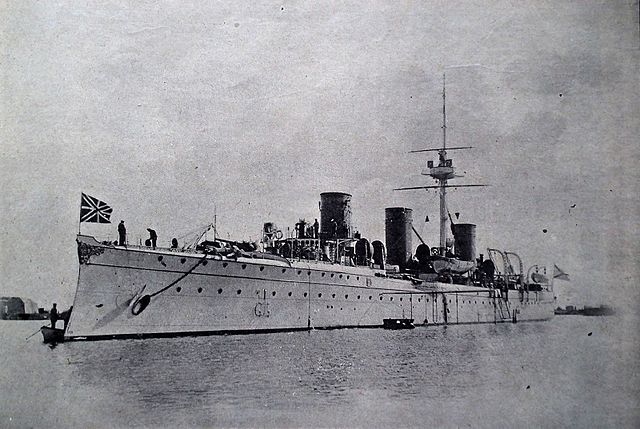
A three-funnelled cruiser with a single mast between the second and third funnels, and a ram bow. The Novik was lightly built as a much enlarged destroyer, but there was a 14in deck increased to 2in on the slopes and to 3in over the top of the engines. The 4.7in guns mounted fore and aft with two on either beam. For her day the Novik were was a very fast ship and attained 19,000ihp for 25.6kts on trials. She was scuttled at Korsakovsk in Sakhalin after an action with the light cruiser Tsushima on 20.8.1904 and was later salved by the Japanese and served in their navy as the Suzuya. The Novik name was given in 1911 to the first of a new revolutionary Russian destroyer.
Boyarin (1901)
Very different from the Novik in appearance, the Boyarin resembled a lighter version of the Bogatyr class with a short forecastle and poop, three funnels and two masts. There was a lin deck with 2in slopes amidships and 3in on the CT. One 4.7in gun was mounted far forward, one aft and the others in upper deck sponsons by the fore and mainmasts. Boyarin struck a Russian mine off Dairen near Port Arthur and was abandoned by her crew. Towing appeared possible, but the Boyarin broke loose during the night and drifted on to another mine and sank.
Izumrud class (1903)
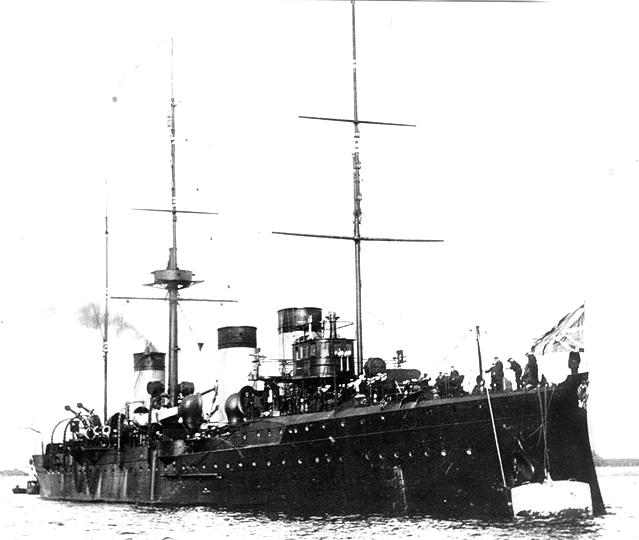
Building of the Izmurud class (Izmurud, Iemtchug) protected cruisers derived from the Novik of 1900, were differentiated mainly by the three masts instead of only one, a significantly greater length, and a modified tertiary armament. The Novik and the Izmurud having been forgiven during the Russo-Japanese War, the Jemtchug was the only survivor in line in 1914. She was at that time based in Penang in Malaysia (North-West of the peninsula), and was surprised October 28, 1914 in the middle of the night by the SMS Emden, the famous German privateer cruiser detached from the Pacific squadron of Von Spee, who, with a fake fourth funnel, posed for a brief moment as a British cruiser before opening fire at close range on the ill-fated Russian Cruiser, with a cannon and a torpedo. See this event. The latter, whose crew was awakened with a bang, barely had time to reply. Screened from all sides, she sank into the harbor and the Emden was able to leave Penang without being worried.
Specifications
Displacement: 3103t standard
Dimensions: 111 x 12.20 x 5 m
Propulsion: 3 shafts VTE, 16 Yarrow boilers, 17,000 hp. 24 knots max.
Armor: CT 31 mm, decks 30-76 mm;
Crew: 350 men.
Armament: 6 x 120 mm, 6 x 47 mm, 2 x 37 mm, 3 x 381 mm TTs (sub)
Murarev Amurzki class cruisers (1914)
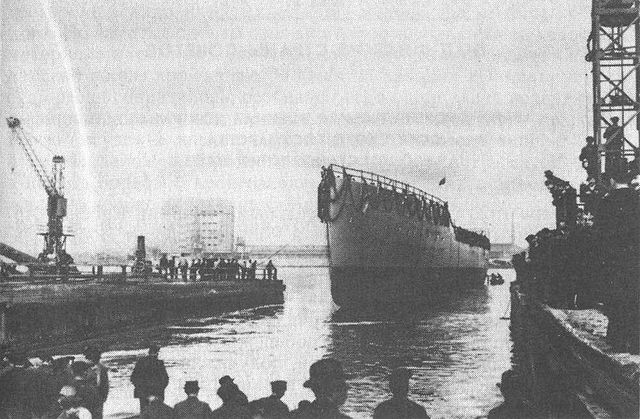
Launch of Muravyov Amursky at Schichau Werke, Gdansk, Poland.
Authorised under the 1912 Programme for the Far Eastern station, they reflected the Russian view on the light type of protected cruiser, in common use in these waters before the Russo-Japanese War. In all respects they were a reduced version of the Svetlana class being built in home yards at that time. Their silhouettes were standardised with those of the mentioned cruisers and 35kts destroyers. Both ships were requisitioned by the German Government on 5 August 1914 and completed for the Kaiserliche Marine as Elbing and Pillau respectively. See under Germany.
Svetlana class cruisers (1915)
Authorised under the 1912 Programme for deployment with the Baltic Fleet. The preliminary studies initiated in 1907 resulted in the characteristics of a 4500t, 28kt cruiser armed with 1-8in, 6–120mm (3×2) in turrets. There were several designs and requirements evaluated in June 1911 extending to 30kt ships armed with 12-6in/50 in 4 triple turrets. Their silhouettes were similar to those of Gangut class dreadnoughts. In February 1912 when it was learned that those demands could be fulfilled within a 10,000t hull, the Naval Staff issued in May 1912 tenders for 6500t, 30kt ships armed with 12-130mm/55 in single shield mountings and armoured with a 3in belt.
Because of the abandonment of turrets it was decided to standardise silhouettes with those of the 35kt destroyers being designed at the same time. To save money for the enlarged battlecruiser programme the Naval Ministry decided in February 1913 to reduce speed by half a knot and on 14 February 1913 orders were placed for four ships.
The side protection of the hull comprised l-in armour between the main and lower deck and 3-in belt uptakes had l-in on the whole length from the lower deck down to 3ft below the waterline.
The main and lower decks had 20 mm of armour each and around the funnels base. In 1913 one seaplane was introduced and at the end of 1917 it was decided to increase their number to 2, together with the crane added to handle them. Svetlana had her 63mm AA replaced by 75mm ones, the others were to get 4in AA guns. The contracted completion dates of June-October 1915 were rescheduled because of shortage of material and manpower and difficulties with replacing of orders for equipment placed in Germany.
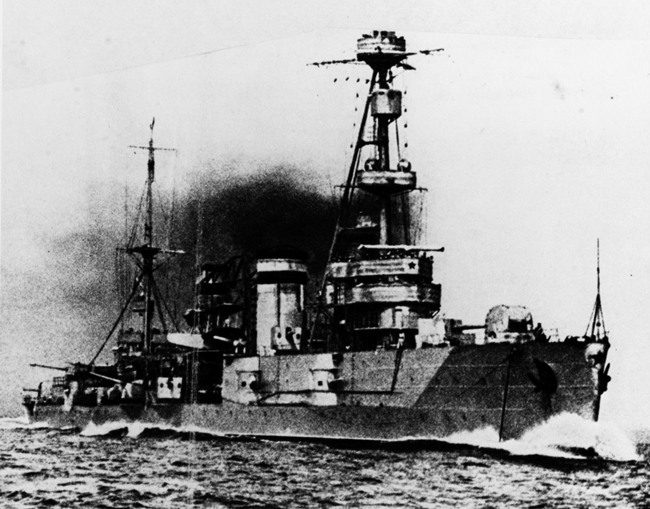
Soviet cruiser Profintern during WW2
Completion of the most advanced Svetlana was planned for the beginning of 1918. She was evacuated with the other incomplete ships from Reval to Petrograd in December 1917 but the Reds were not able to complete her for service with the Active Squadron in 1919. Renamed Profintern on 7 December 1922. Admiral Greig and Admiral Spiridov were completed as mercantile motor tankers Azneft and Grozneft by the Baltic Yd and Northern Yd respectively and transferred to the Black Sea. The former was stranded in a gale off Tuapse. The hull of Admiral Butakov had been laid up after the Bolshevik Revolution and was renamed Voroshilov in 1928.
Admiral Nakhimov class cruisers (1915)

Admiral Nakhimov class oiginal design – Credits navypedia
Authorised under the 1912 (first pair) and 1914 Programmes for deployment with the Black Sea Fleet. The Naval Staff decided to build these cruisers as the repeated Svetlana class and appropriate drawings were presented to the Russud and Naval Yards. The design was critically reviewed and John Brown Yd consulted to help the Russians to rework these with the general layout retained but displacement enlarged by 1000t and speed increased. The Naval Staff approved the modified design and the first pair of ships was ordered in March 1914, followed by the second one in October 1914. The yards made an agreement giving hull construction to Russud while the Naval Yd was to fit them out.
In 1917 the Naval Staff decided to add the second seaplane and a crane to handle it. At that time it was decided to equip Admiral Nakhimov with 75mm AA instead of 63mm while the other ships were to be fitted with 4in AA. The completion of this cruiser was delayed from autumn to December 1917 because of wartime difficulties and her sister ships were far less advanced at that time. The Bolshevik Revolution prevented completion of Admiral Nakhimov which together with incomplete hull of Admiral Lazarev was seized by the Germans in 1918. Both of them were handed over to the Allies in November 1918 and transferred to Wrangel’s fleet in 1919.
Still incomplete in 1920 Admiral Nakhimov was scheduled for evacuation but the Whites were forced to abandon her in Odessa. She was seized there by the Reds and renamed Chervona Ukraina in December 1926. Admiral Lazarev was completed to the modified design in 1932 and entered service under the name Krasni Kavkaz. Admiral Kornilov was launched to clear the slipway in 1922 and BU while Admiral Istomin was dismantled in situ. More on the Profintern class cruisers
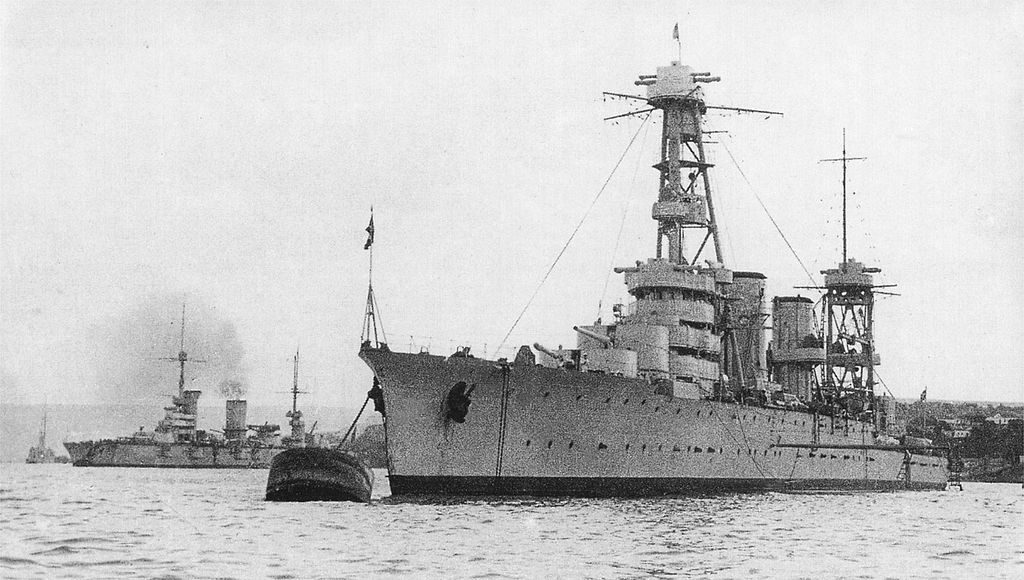
Krazny Kavkaz, the most extensive reconstruction of the two cruisers (with Chervona Ukraina)
4000 tons minelayer cruisers project (1915)
Authorized under the 1915 emergency program, to be deployed in the Baltic fleet, and replaced the Amurski class requisitioned by Germany. The naval staff worked out the requirements under the influence of successful minelaying operations of Russian light forces. They were to be 4000 tonnes standard, 5000 tonnes fully loaded, and armed with six to eight 130 mm/55 guns, and were to be ale to carry some 350 to 450 mines. The blueprints were never completed and the ship never ordered. For their appearance, they could have been Russian versions of the Pillau class.
Read More/Src
R. Gardiner, Conway’s all the world’s fighting ships 1865-1905 & 1906-1921
fr.naval-encyclopedia.com/1ere-guerre-mondiale/marine-russe1914.php#crois
https://en.wikipedia.org/wiki/List_of_cruisers_of_the_Russian_Navy
http://www.navweaps.com/Weapons/WNRussian_Main.php
Amazing colorized photos by Iroo toko

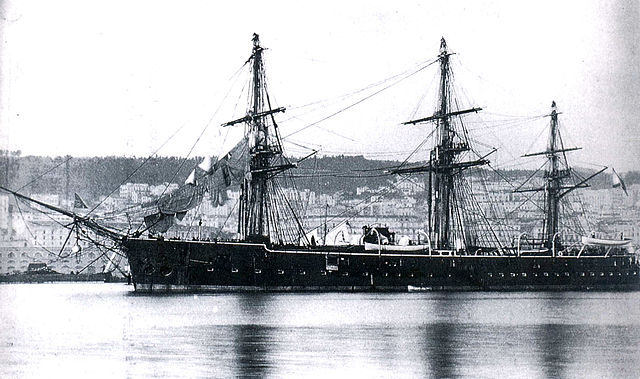
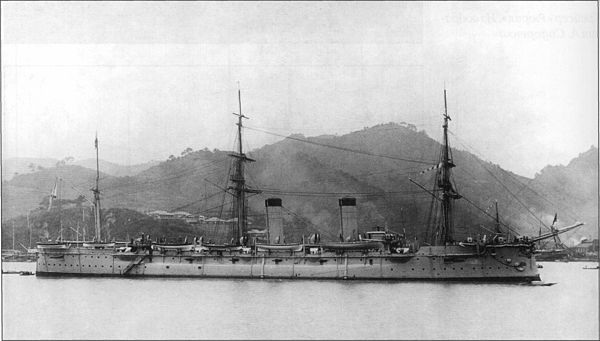
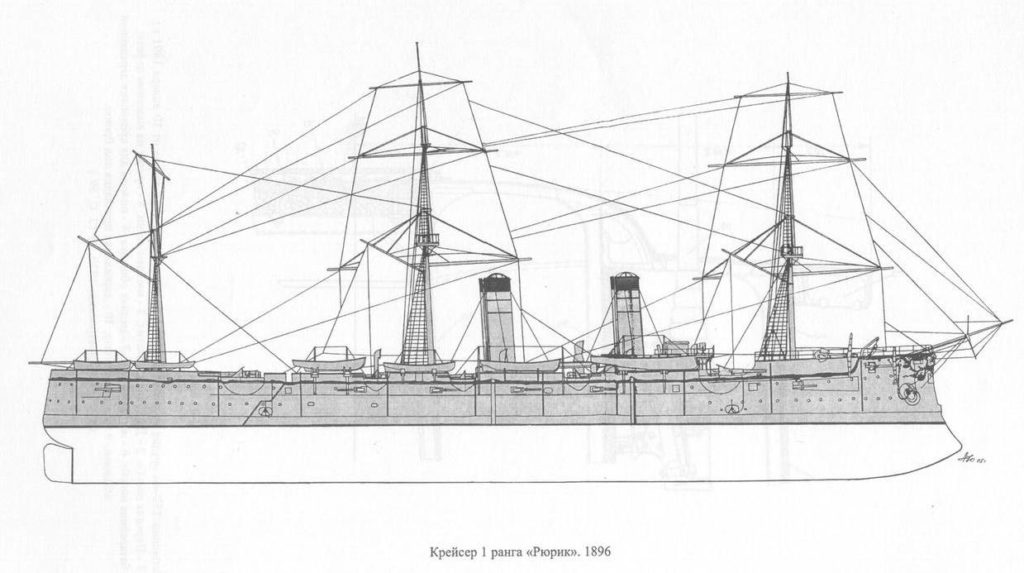
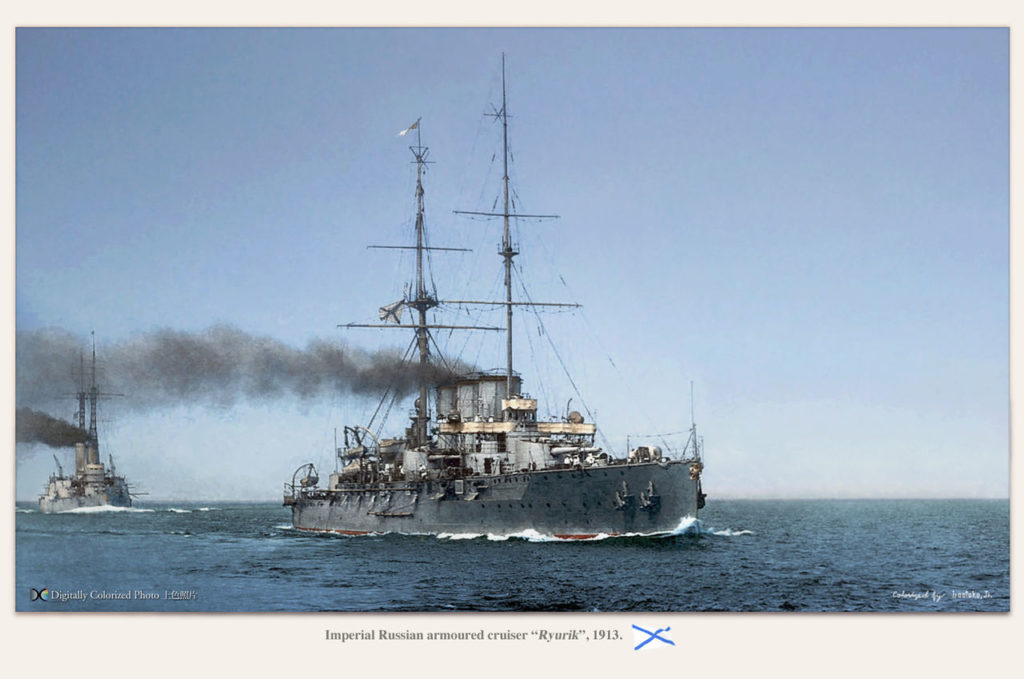
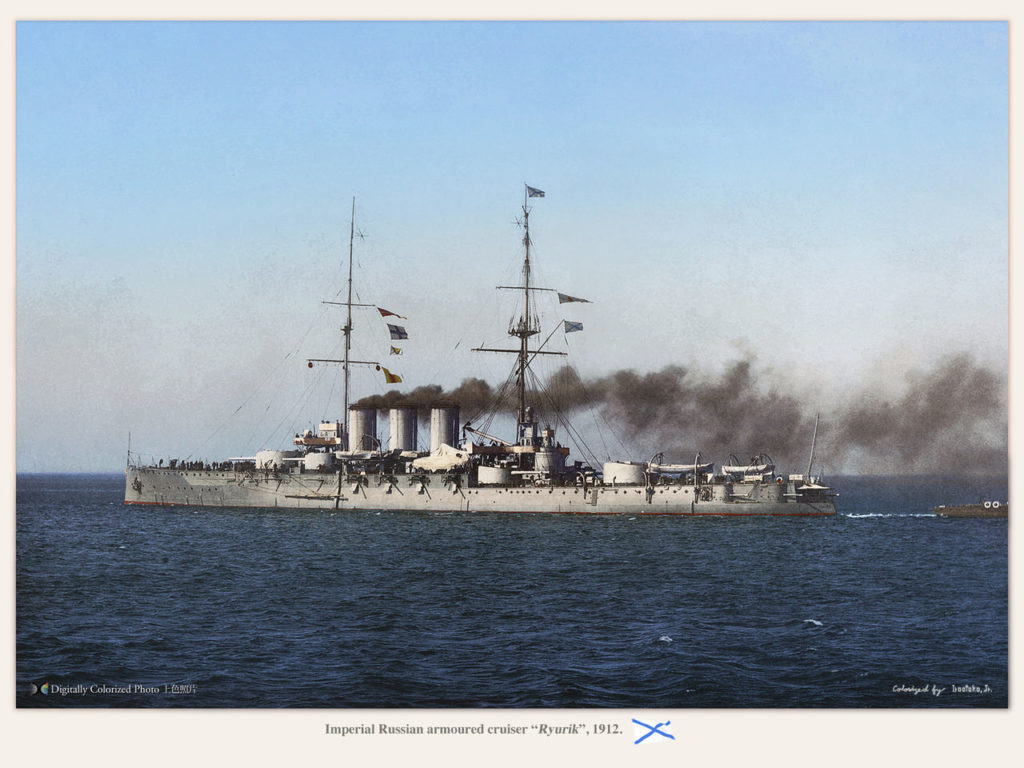
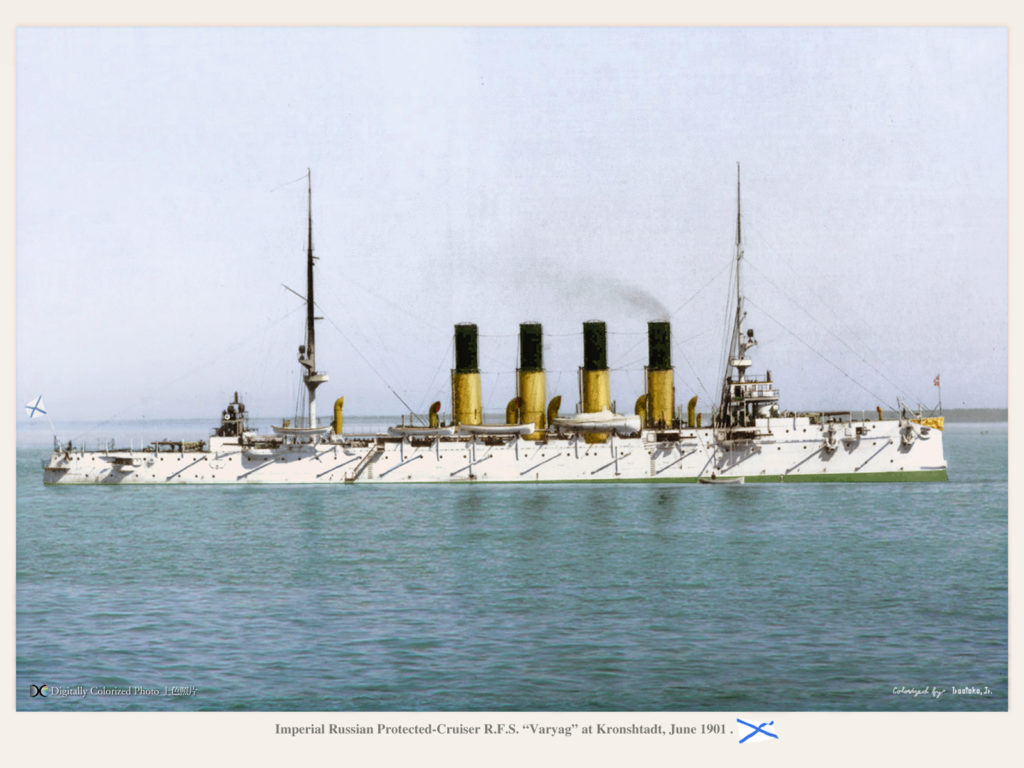
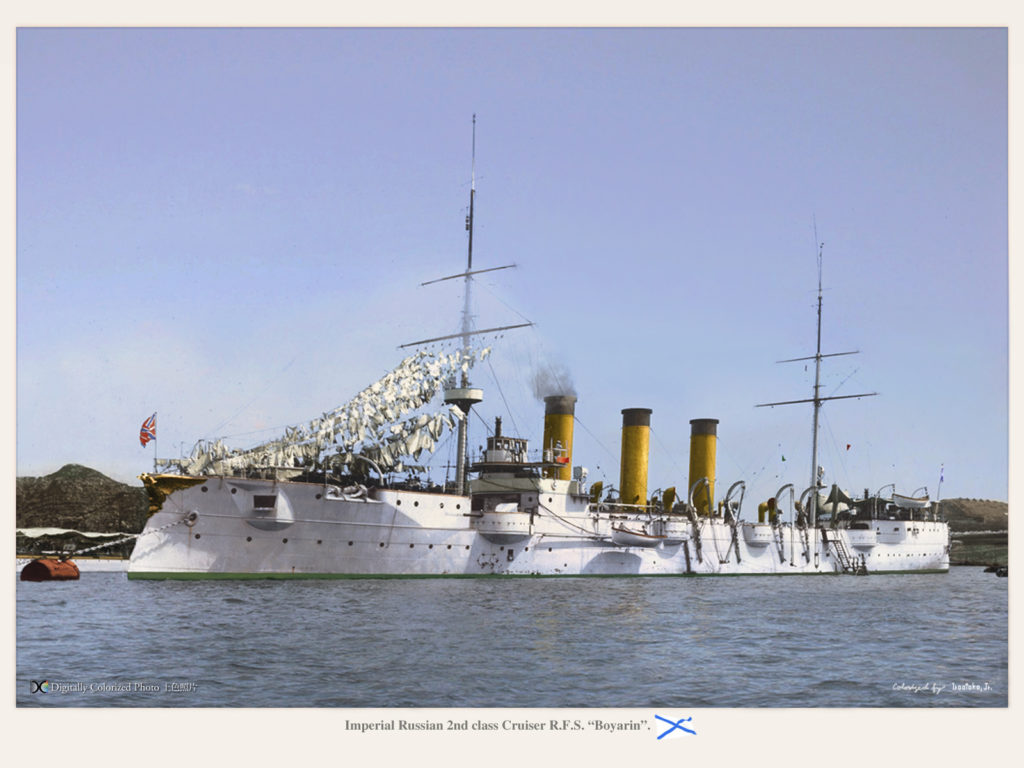
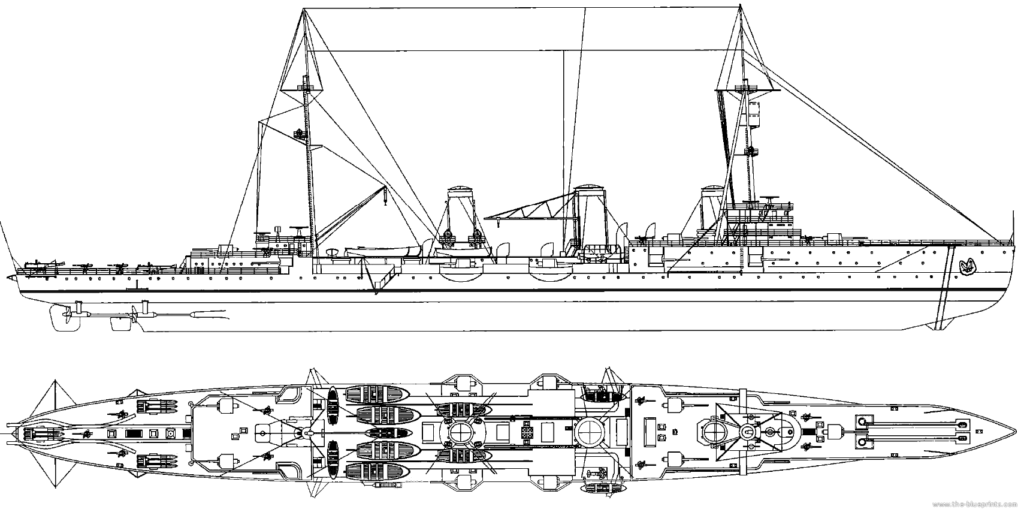
 Latest Facebook Entry -
Latest Facebook Entry -  X(Tweeter) Naval Encyclopedia's deck archive
X(Tweeter) Naval Encyclopedia's deck archive Instagram (@navalencyc)
Instagram (@navalencyc)





 French Navy
French Navy Royal Navy
Royal Navy Russian Navy
Russian Navy Armada Espanola
Armada Espanola Austrian Navy
Austrian Navy K.u.K. Kriegsmarine
K.u.K. Kriegsmarine Dansk Marine
Dansk Marine Nautiko Hellenon
Nautiko Hellenon Koninklije Marine 1870
Koninklije Marine 1870 Marinha do Brasil
Marinha do Brasil Osmanlı Donanması
Osmanlı Donanması Marina Do Peru
Marina Do Peru Marinha do Portugal
Marinha do Portugal Regia Marina 1870
Regia Marina 1870 Nihhon Kaigun 1870
Nihhon Kaigun 1870 Preußische Marine 1870
Preußische Marine 1870 Russkiy Flot 1870
Russkiy Flot 1870 Svenska marinen
Svenska marinen Søværnet
Søværnet Union Navy
Union Navy Confederate Navy
Confederate Navy Armada de Argentina
Armada de Argentina Imperial Chinese Navy
Imperial Chinese Navy Marinha do Portugal
Marinha do Portugal Mexico
Mexico Kaiserliche Marine
Kaiserliche Marine 1898 US Navy
1898 US Navy Sovietskiy Flot
Sovietskiy Flot Royal Canadian Navy
Royal Canadian Navy Royal Australian Navy
Royal Australian Navy RNZN Fleet
RNZN Fleet Chinese Navy 1937
Chinese Navy 1937 Kriegsmarine
Kriegsmarine Chilean Navy
Chilean Navy Danish Navy
Danish Navy Finnish Navy
Finnish Navy Hellenic Navy
Hellenic Navy Polish Navy
Polish Navy Romanian Navy
Romanian Navy Turkish Navy
Turkish Navy Royal Yugoslav Navy
Royal Yugoslav Navy Royal Thai Navy
Royal Thai Navy Minor Navies
Minor Navies Albania
Albania Austria
Austria Belgium
Belgium Columbia
Columbia Costa Rica
Costa Rica Cuba
Cuba Czechoslovakia
Czechoslovakia Dominican Republic
Dominican Republic Haiti
Haiti Hungary
Hungary Honduras
Honduras Estonia
Estonia Iceland
Iceland Eire
Eire Equador
Equador Iran
Iran Iraq
Iraq Latvia
Latvia Liberia
Liberia Lithuania
Lithuania Mandchukuo
Mandchukuo Morocco
Morocco Nicaragua
Nicaragua Persia
Persia San Salvador
San Salvador Sarawak
Sarawak Uruguay
Uruguay Venezuela
Venezuela Zanzibar
Zanzibar Warsaw Pact Navies
Warsaw Pact Navies Bulgaria
Bulgaria Hungary
Hungary

 Bundesmarine
Bundesmarine Dutch Navy
Dutch Navy Hellenic Navy
Hellenic Navy Marina Militare
Marina Militare Yugoslav Navy
Yugoslav Navy Chinese Navy
Chinese Navy Indian Navy
Indian Navy Indonesian Navy
Indonesian Navy JMSDF
JMSDF North Korean Navy
North Korean Navy Pakistani Navy
Pakistani Navy Philippines Navy
Philippines Navy ROKN
ROKN Rep. of Singapore Navy
Rep. of Singapore Navy Taiwanese Navy
Taiwanese Navy IDF Navy
IDF Navy Saudi Navy
Saudi Navy Royal New Zealand Navy
Royal New Zealand Navy Egyptian Navy
Egyptian Navy South African Navy
South African Navy






























 Ukrainian Navy
Ukrainian Navy dbodesign
dbodesign